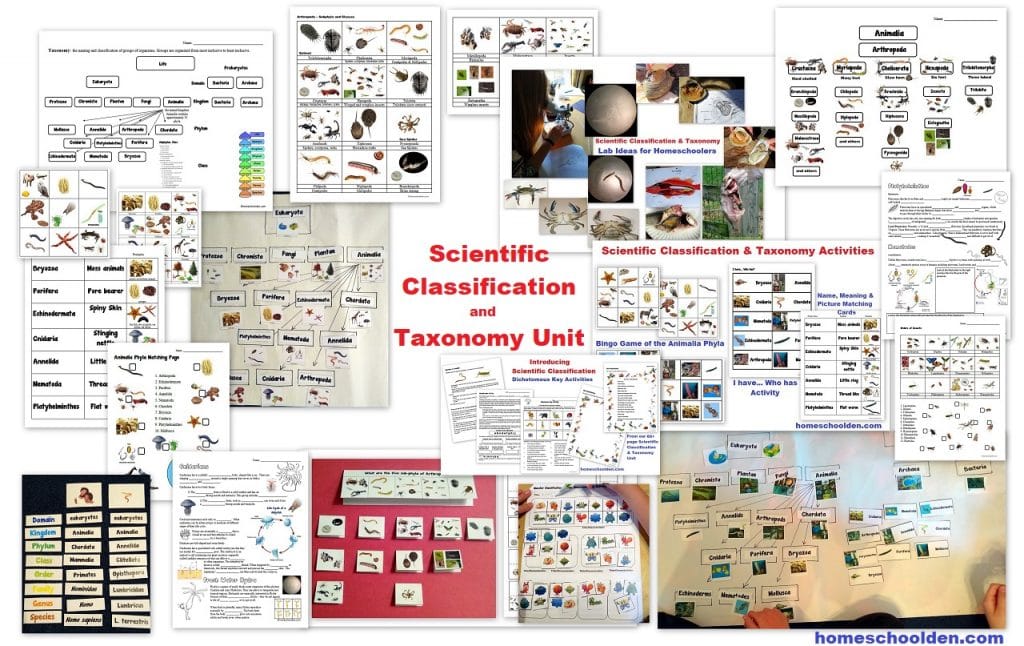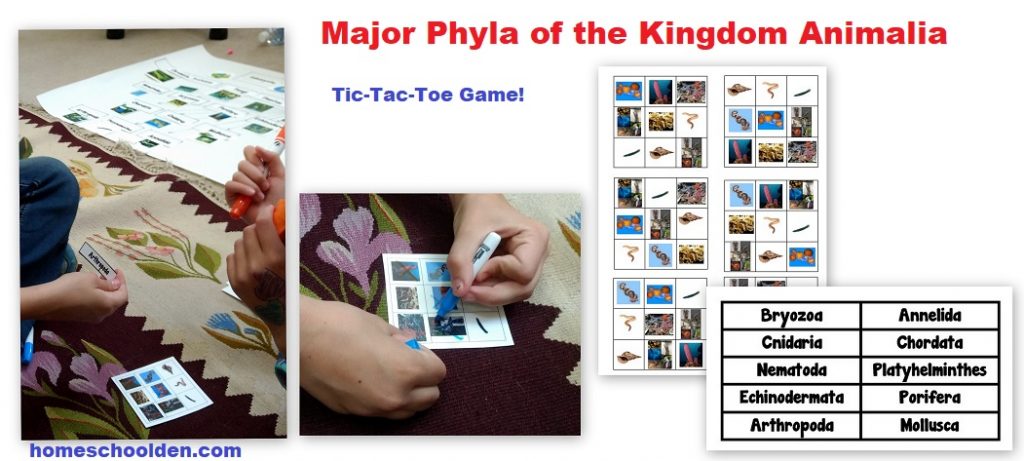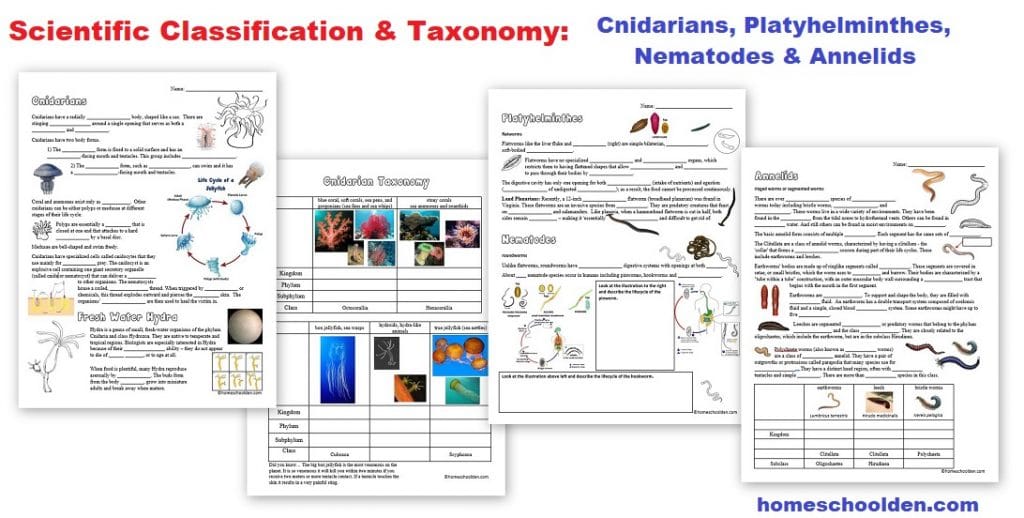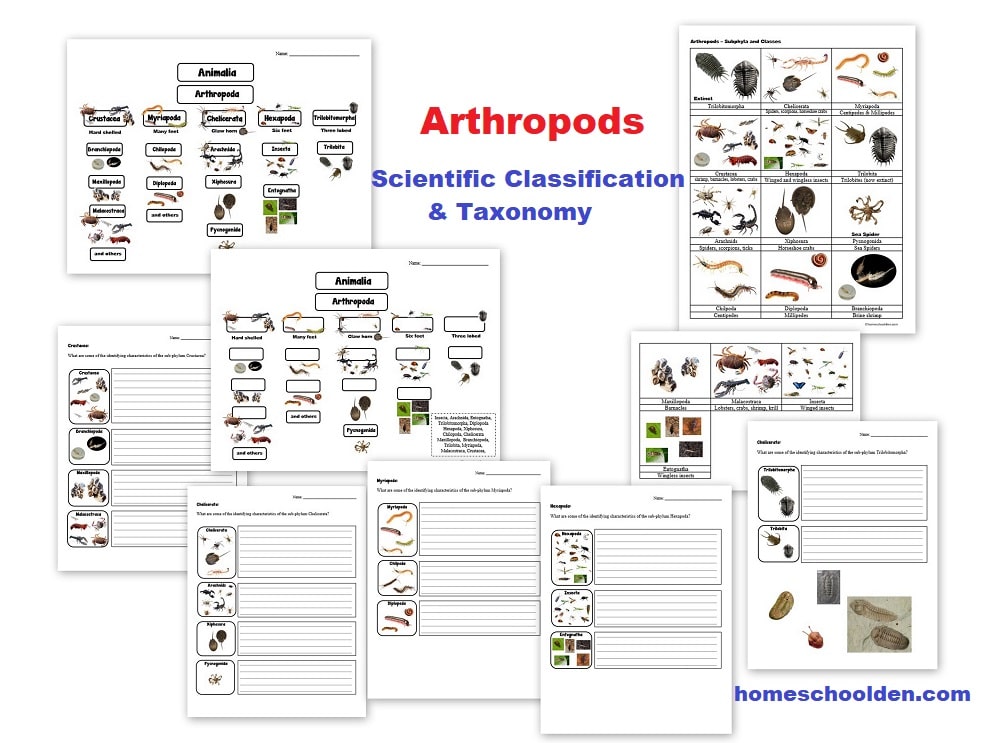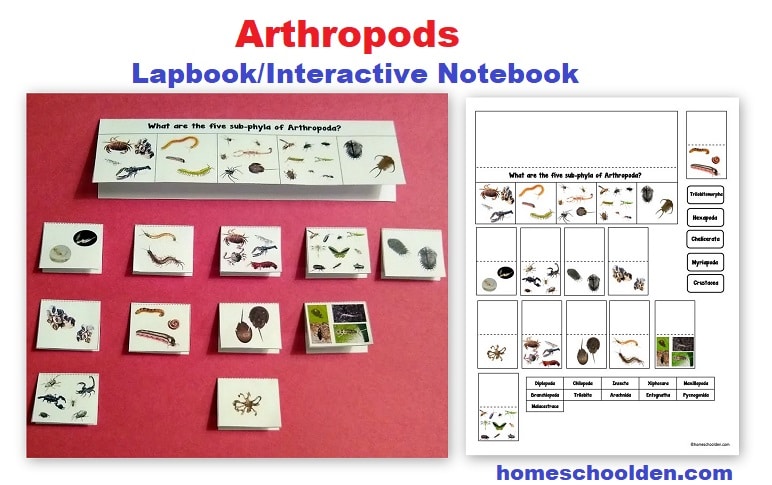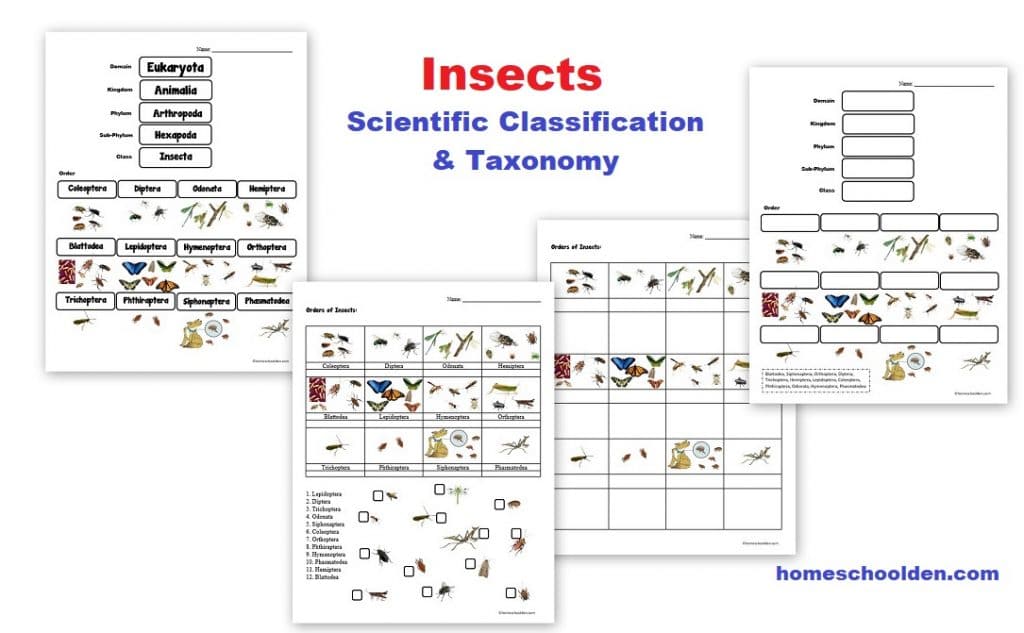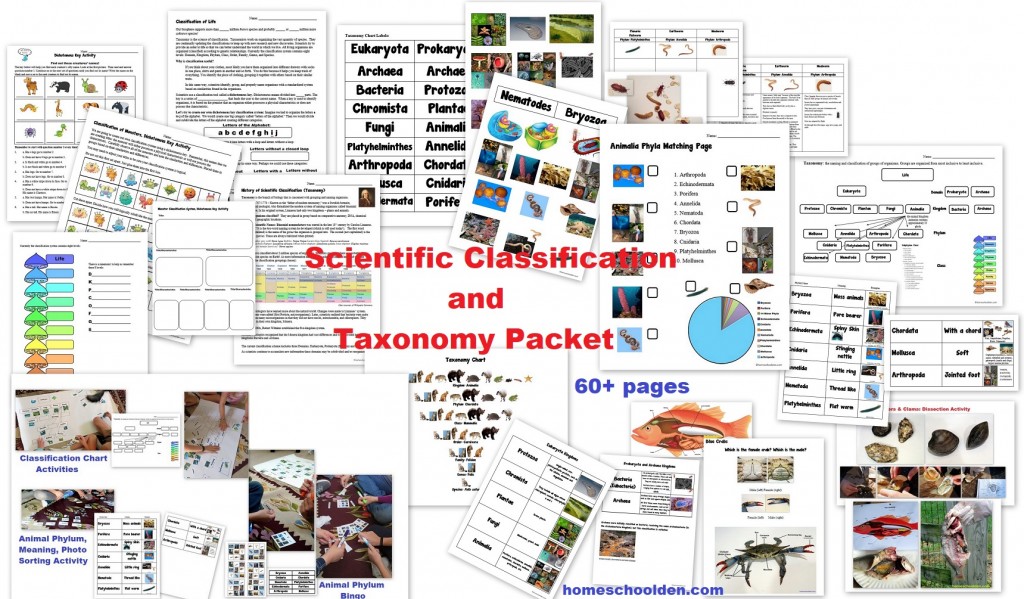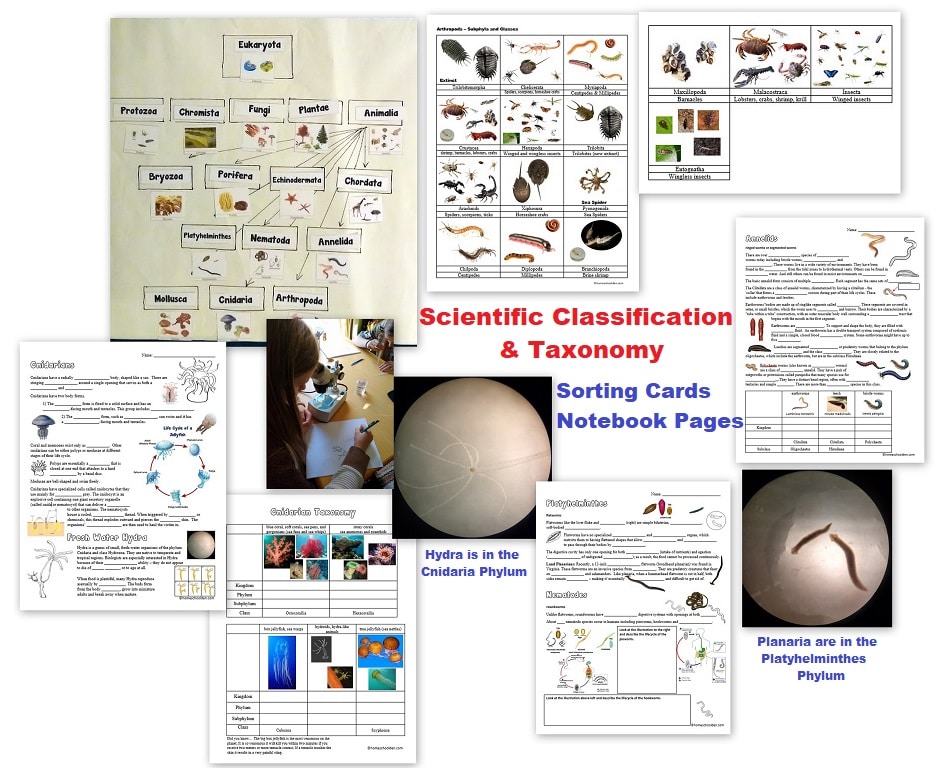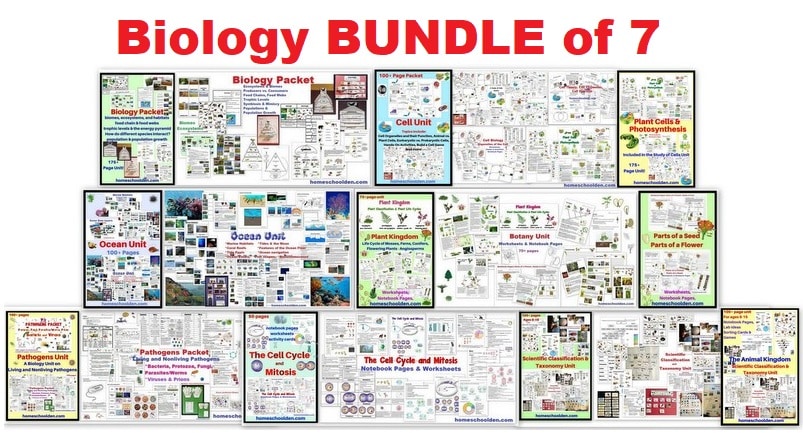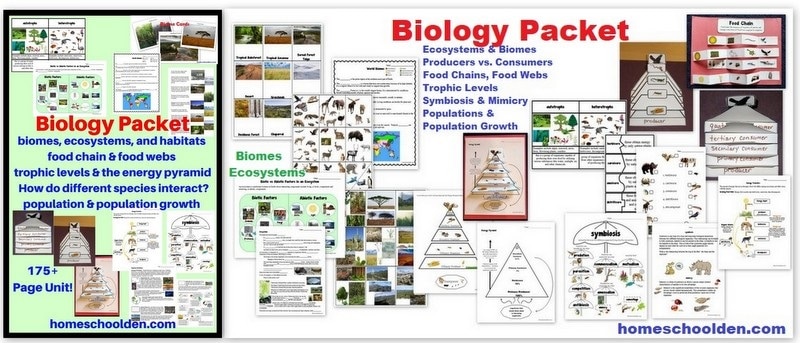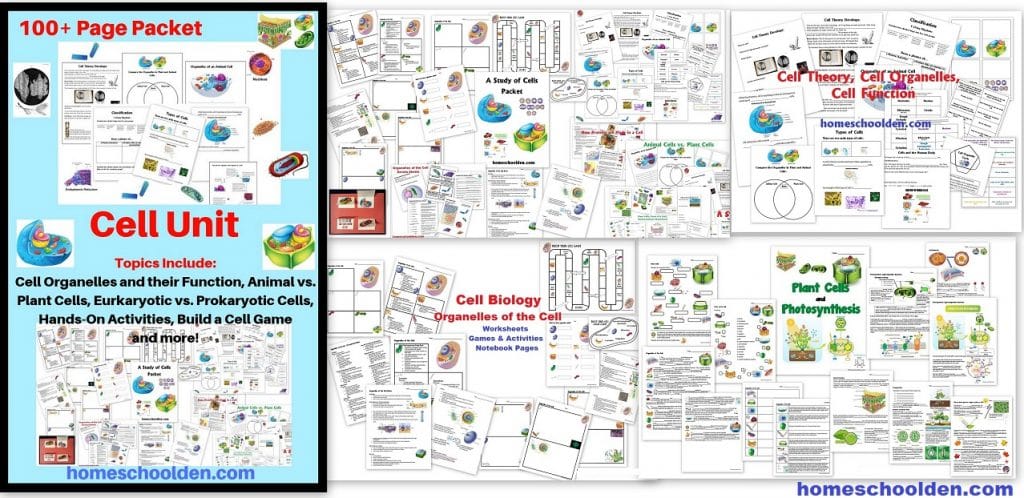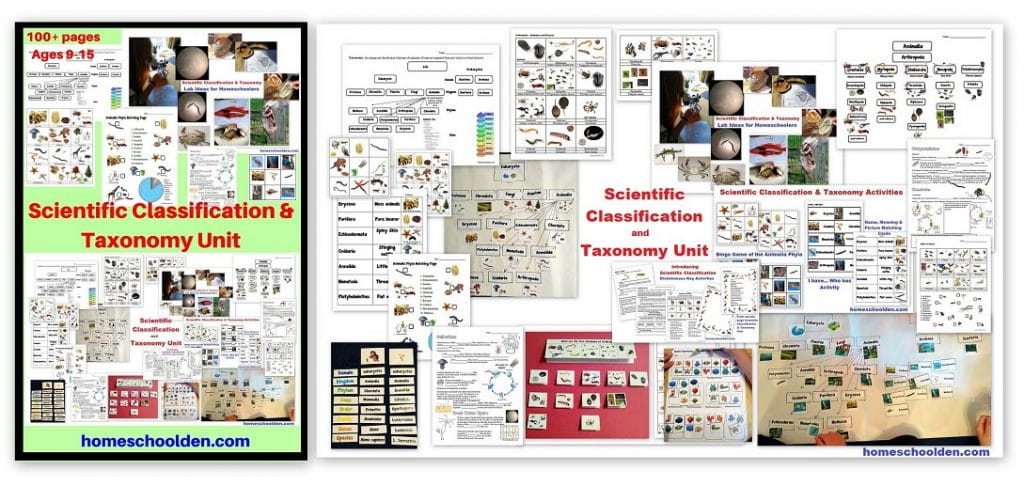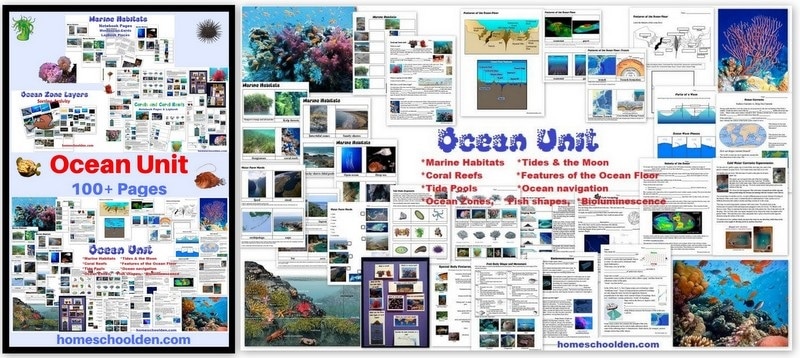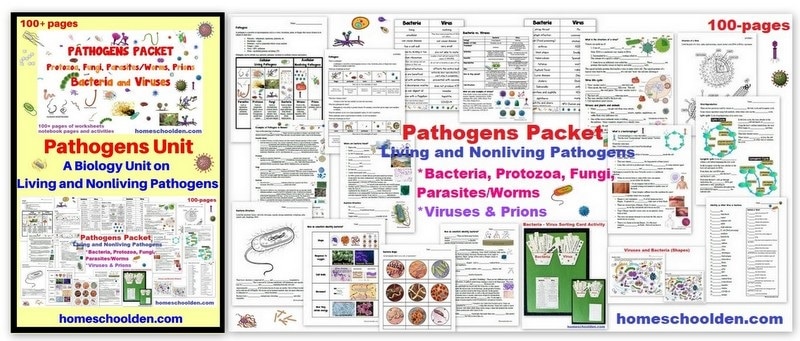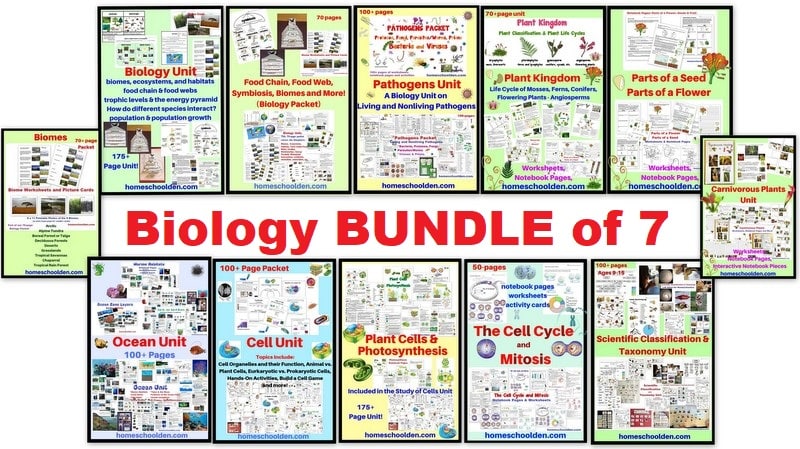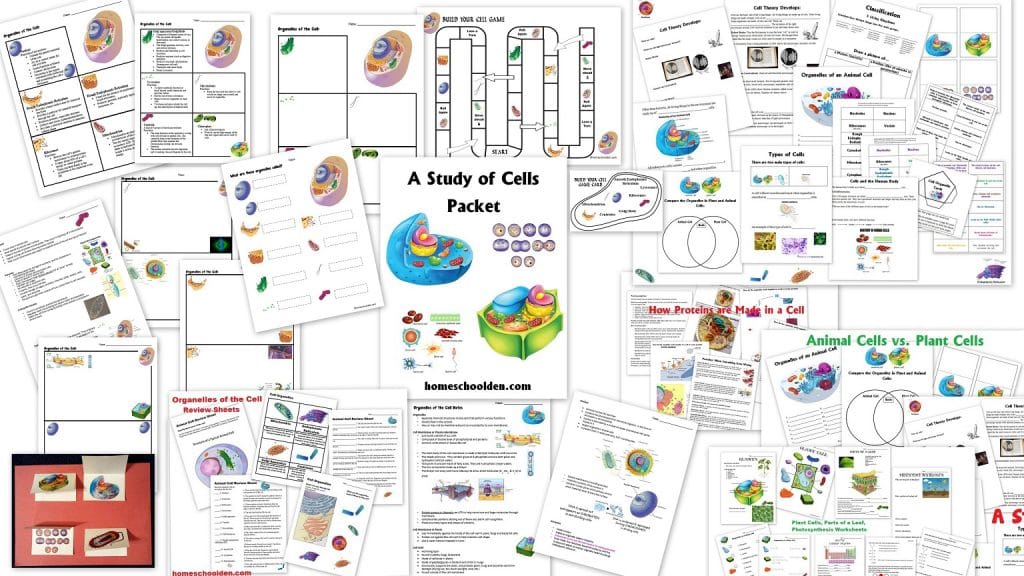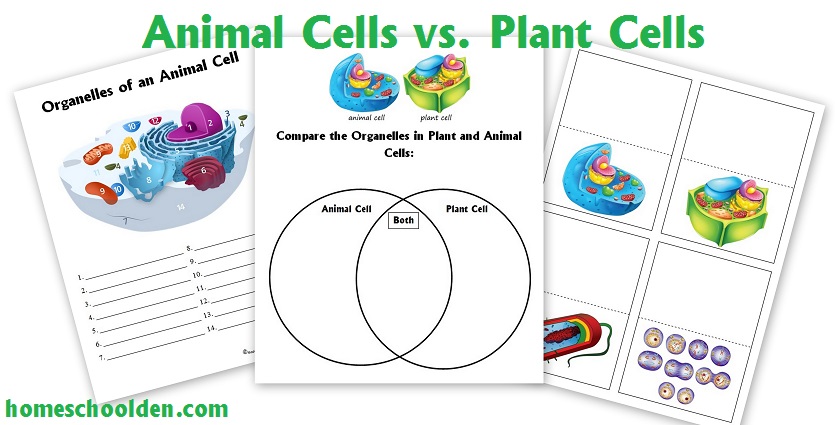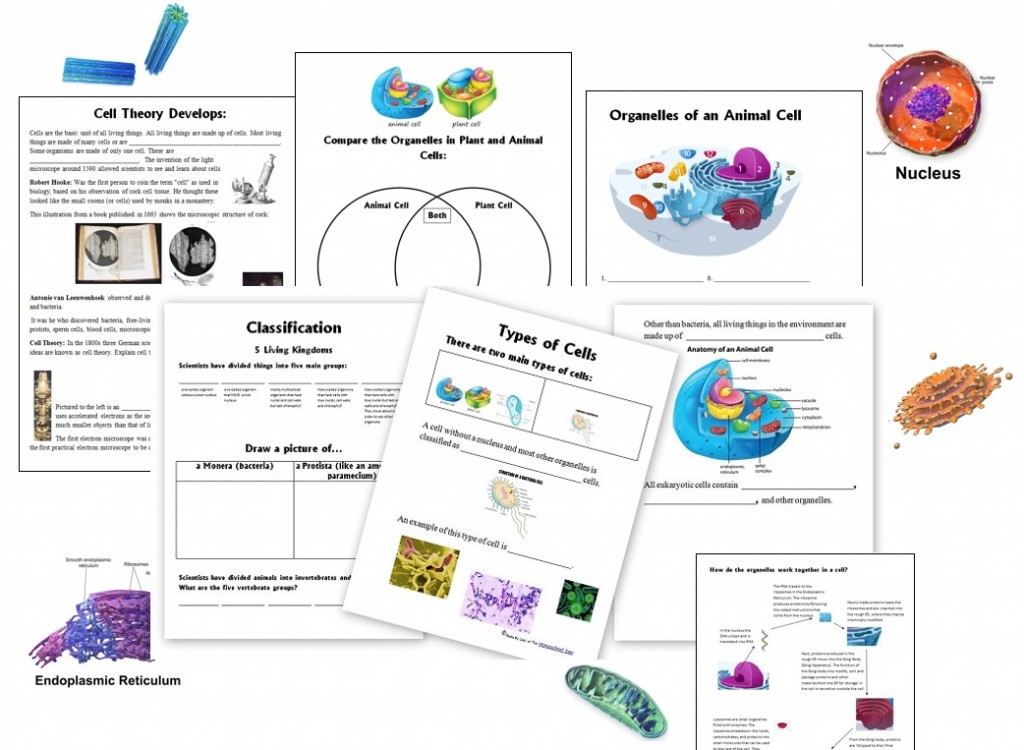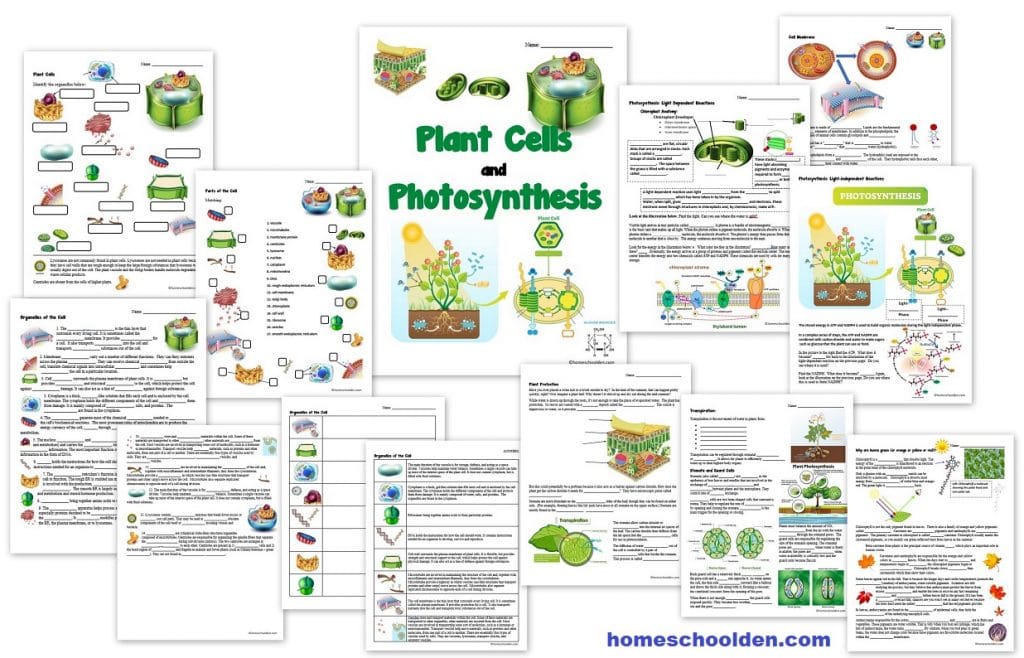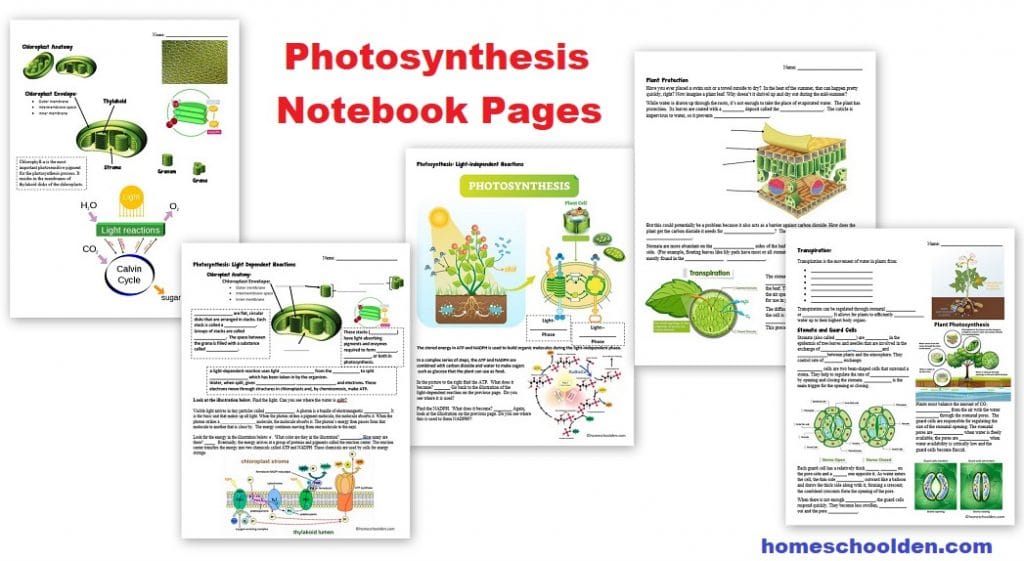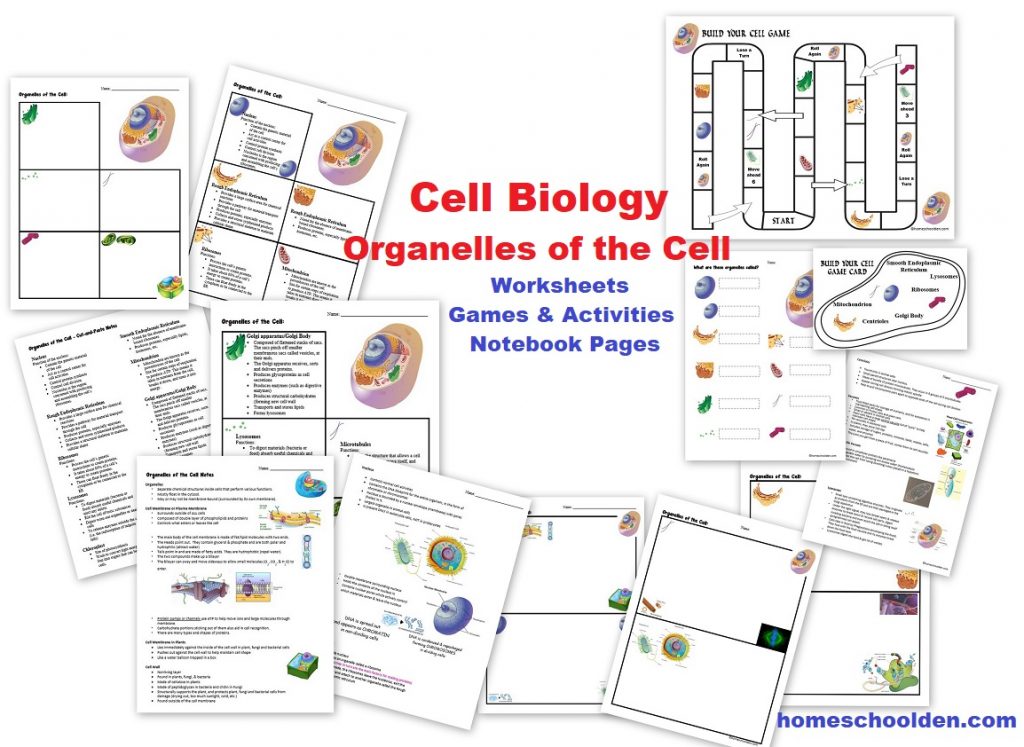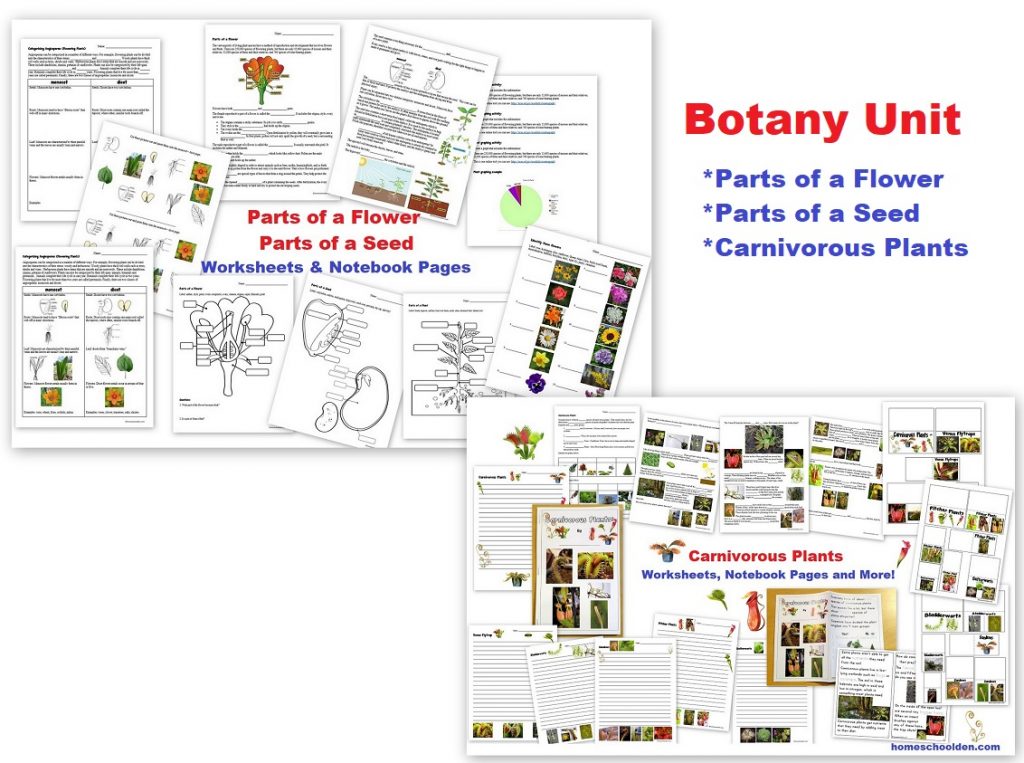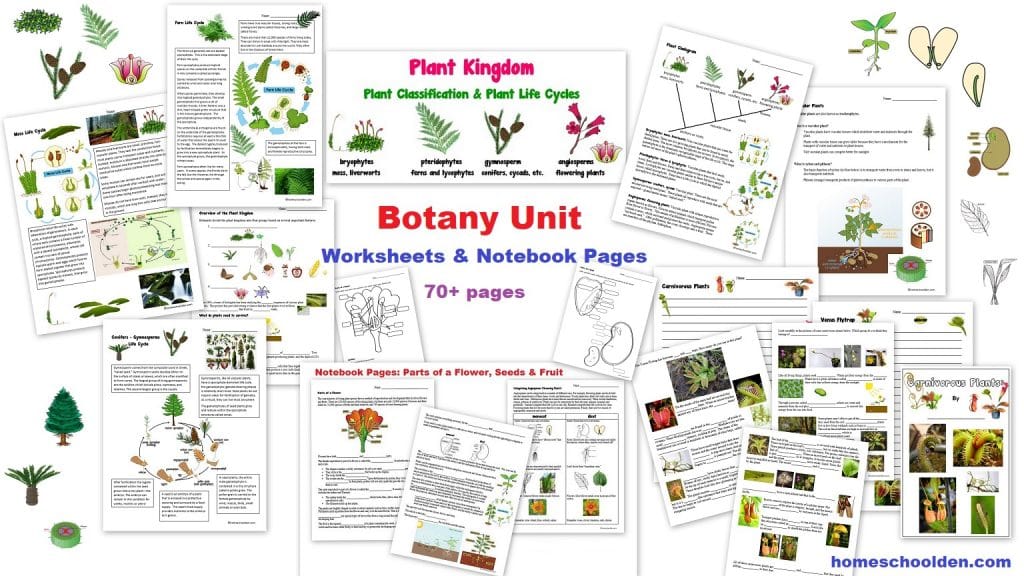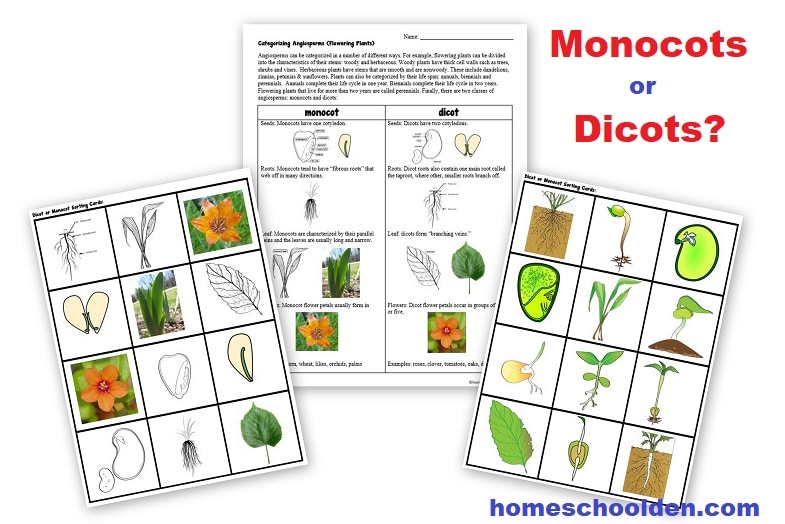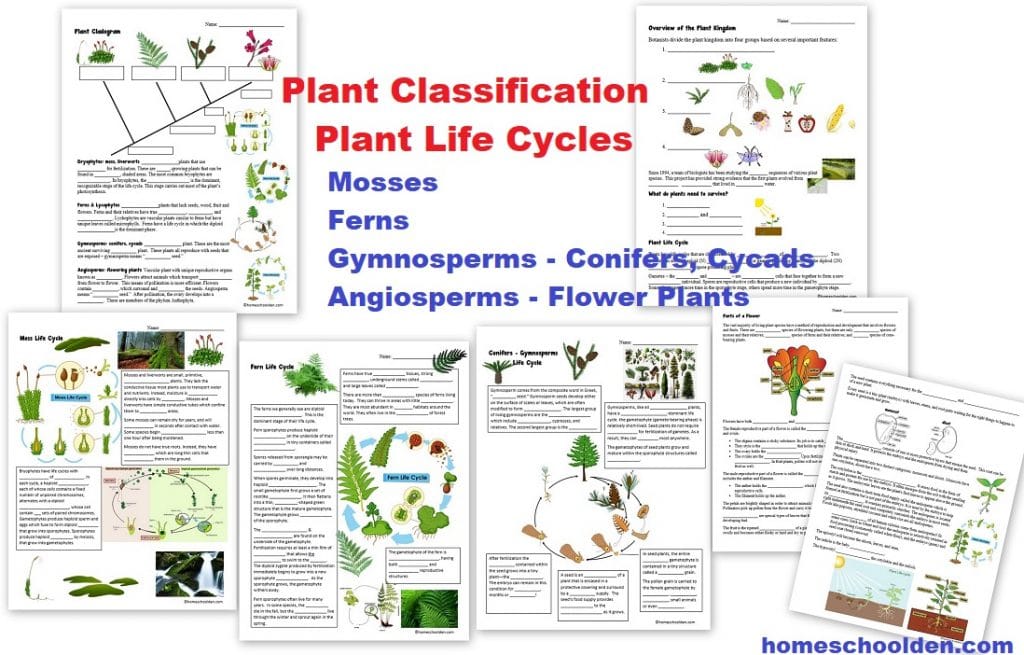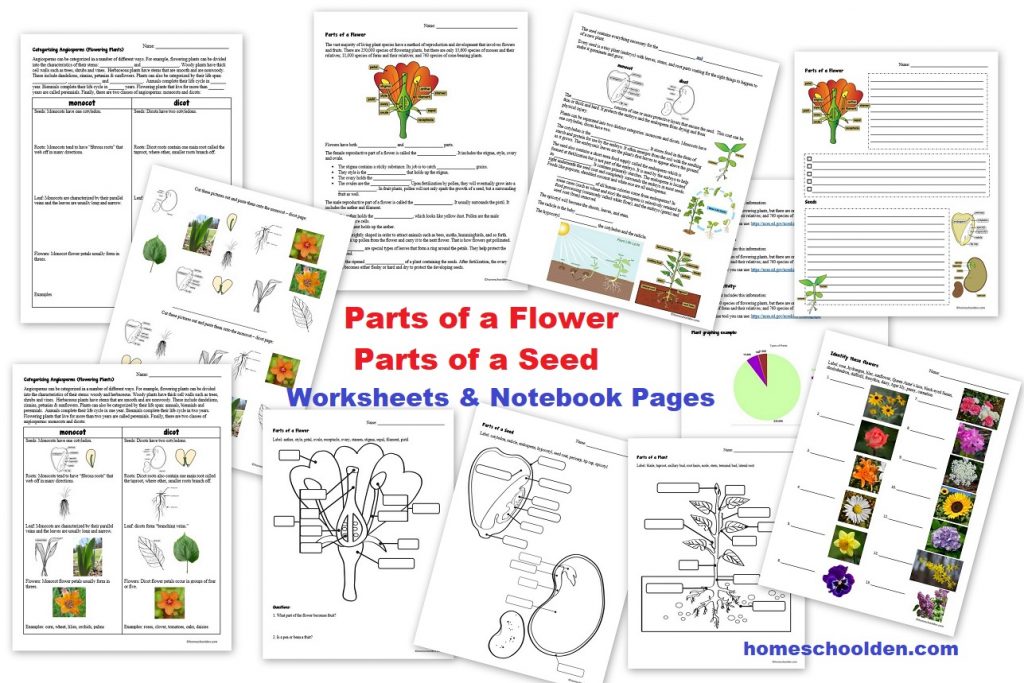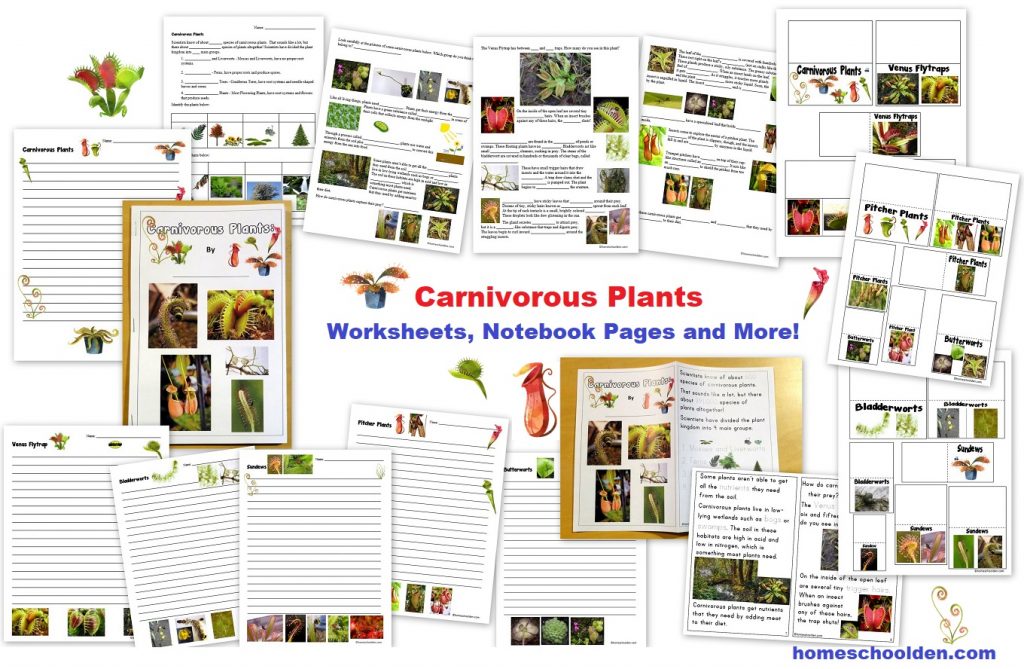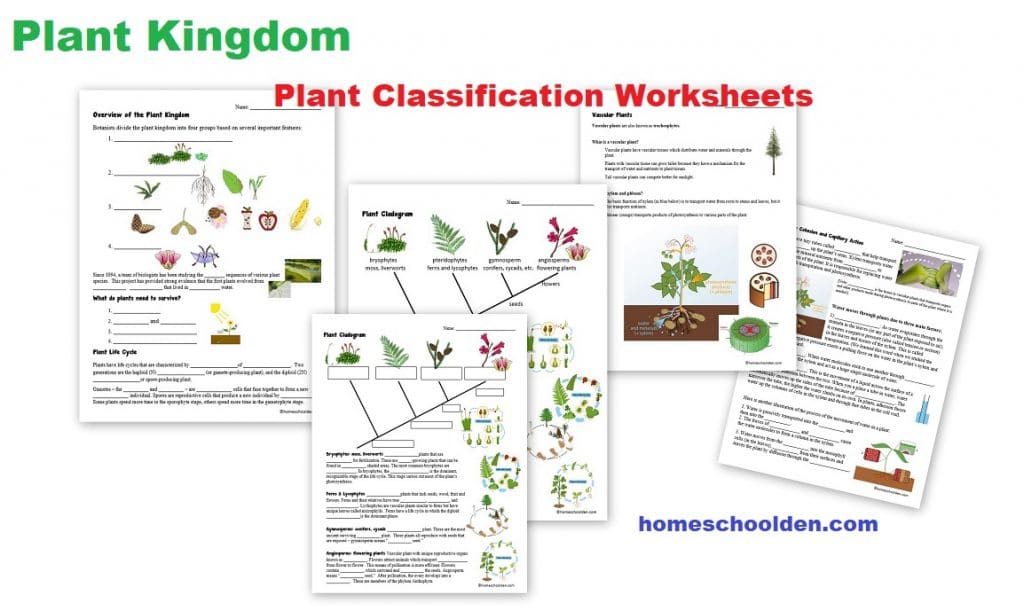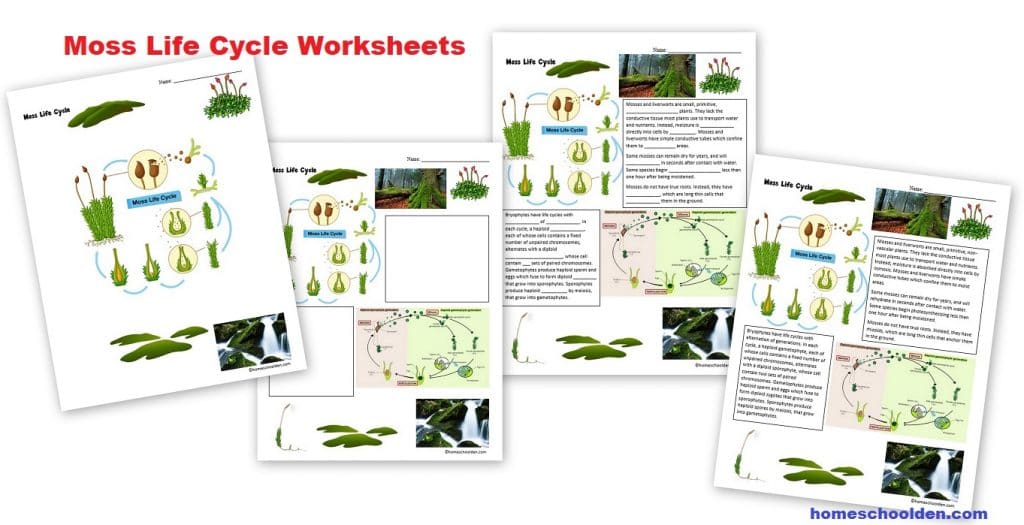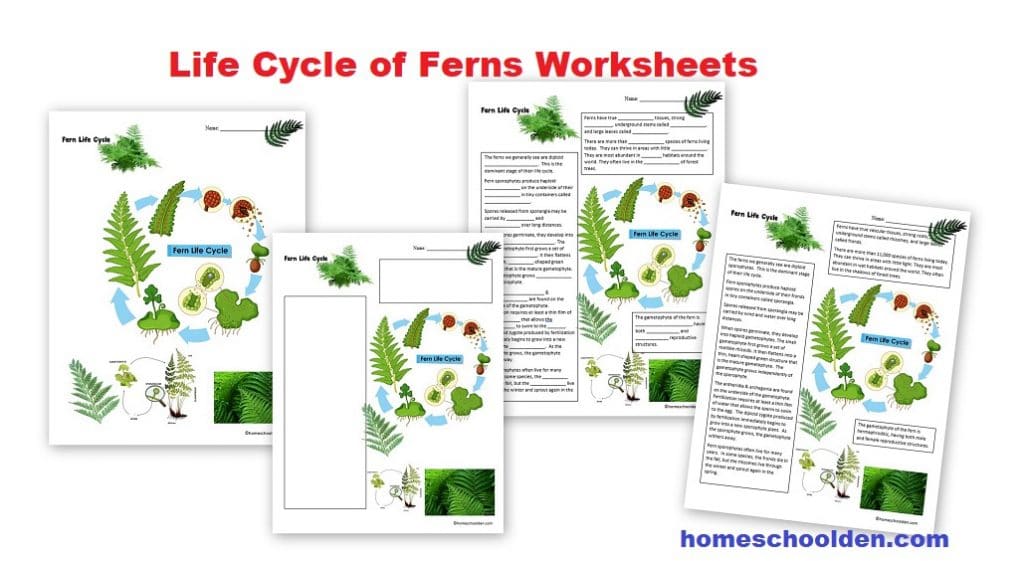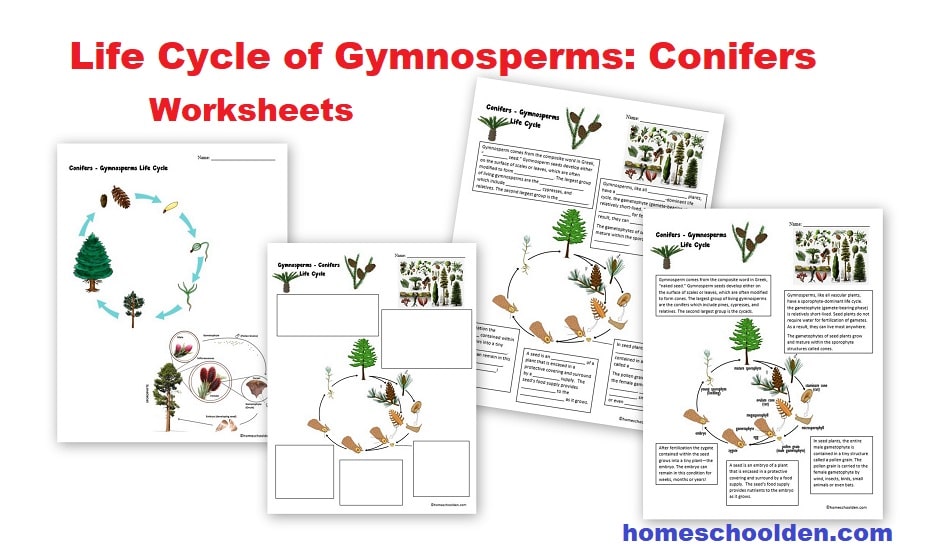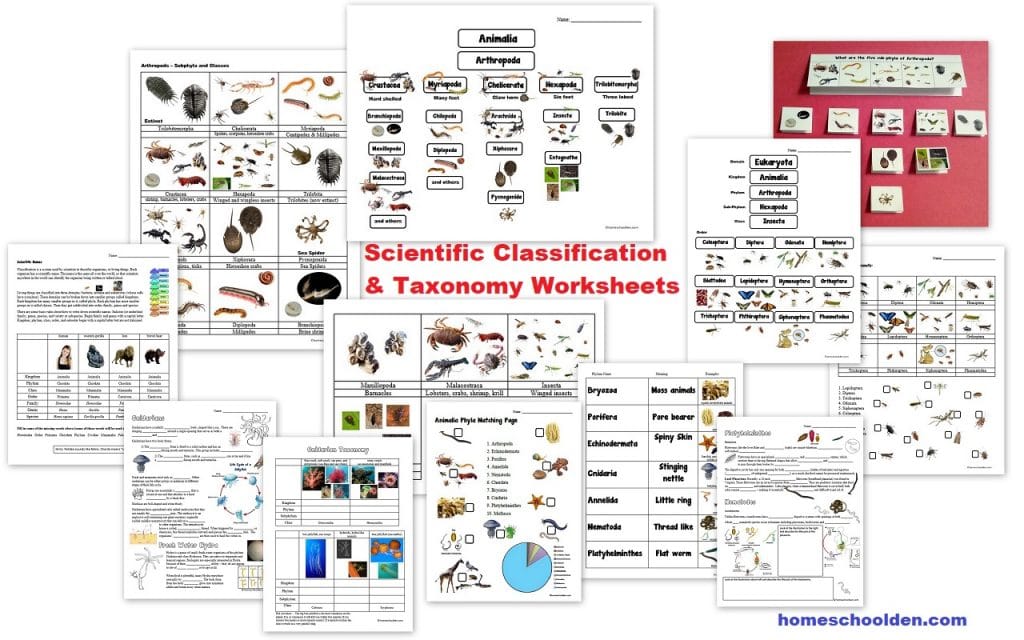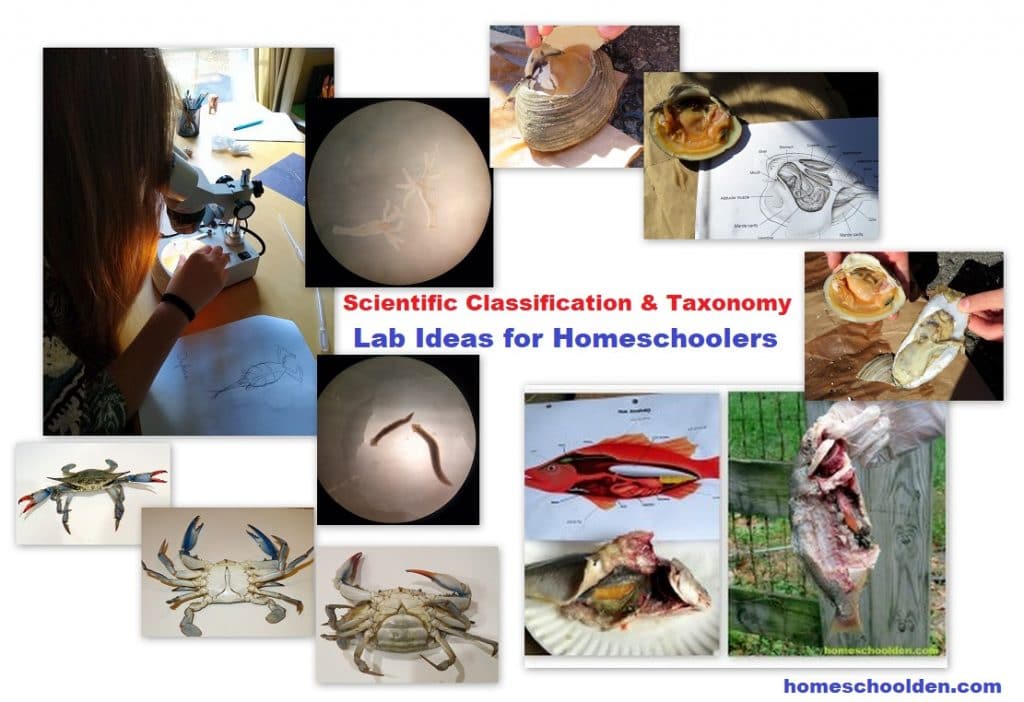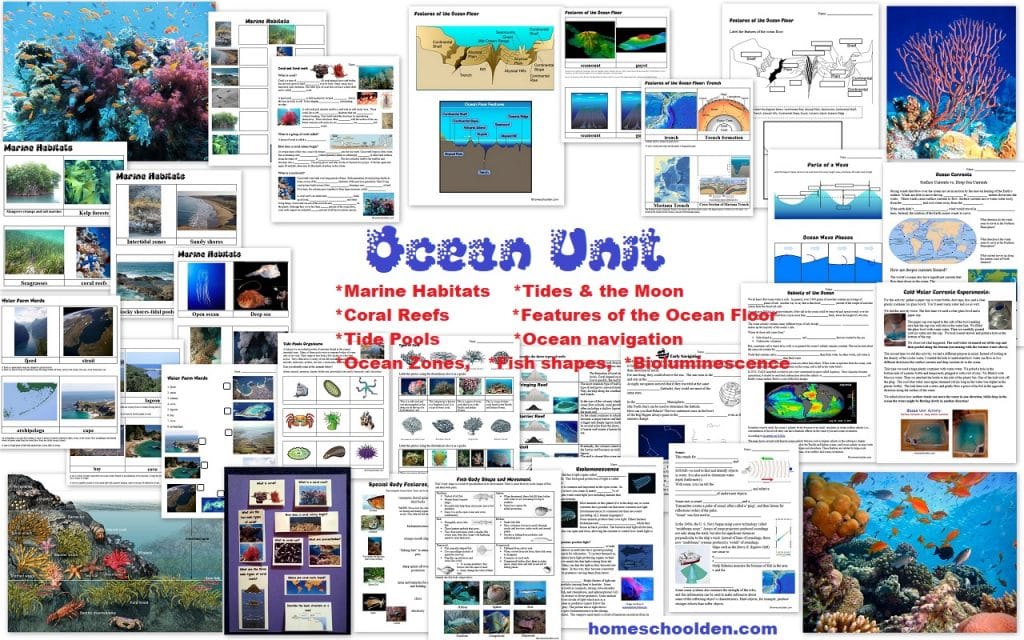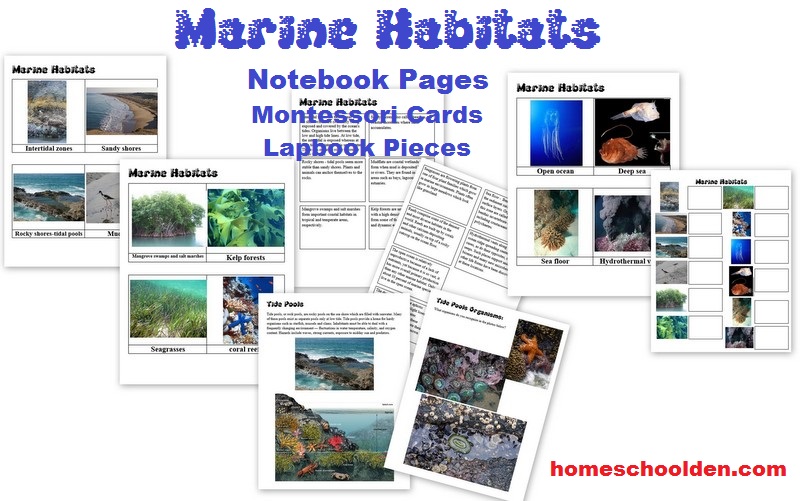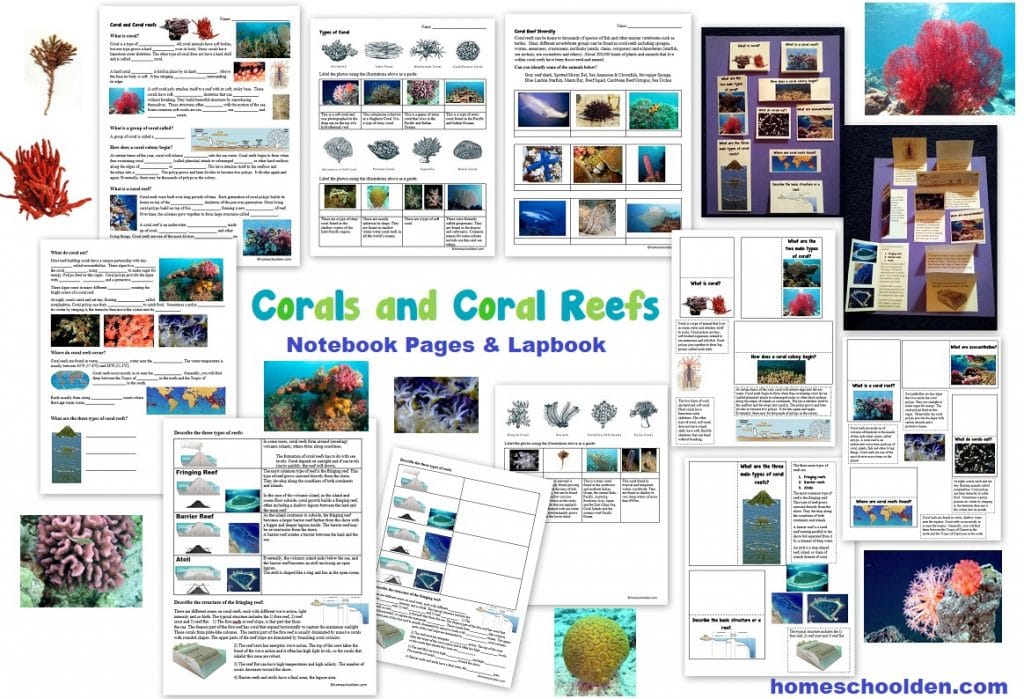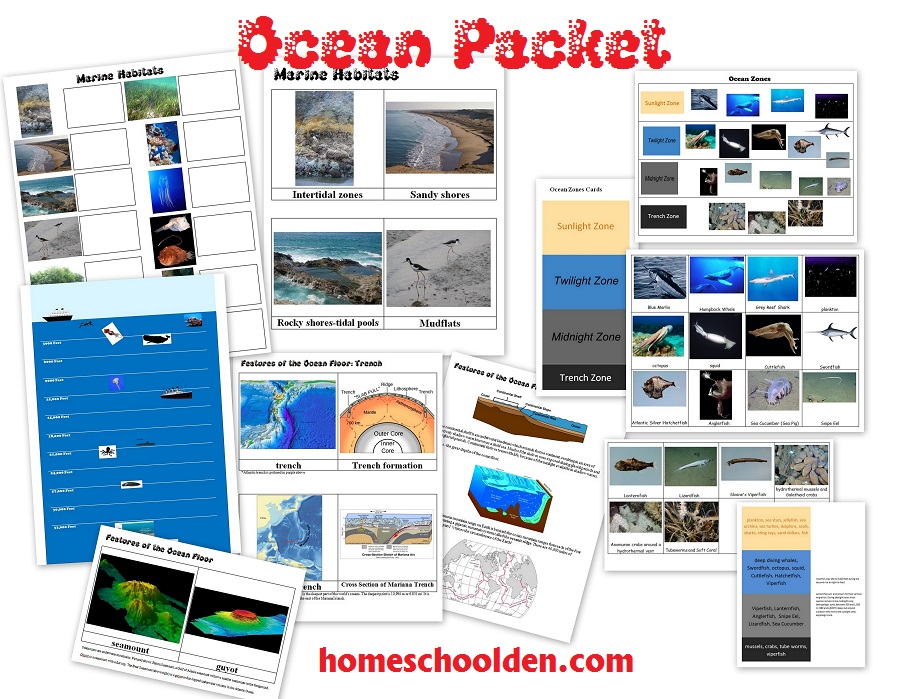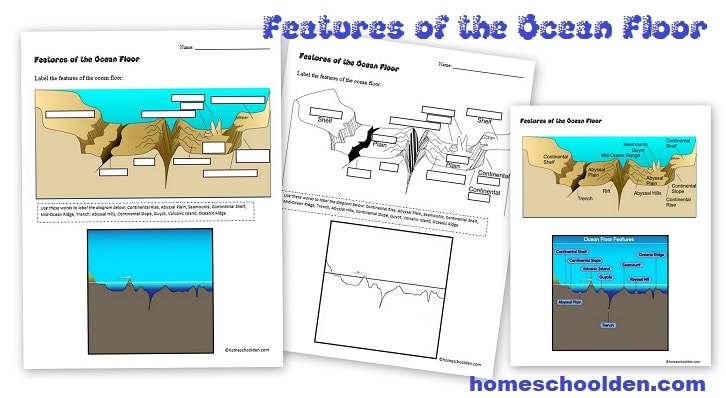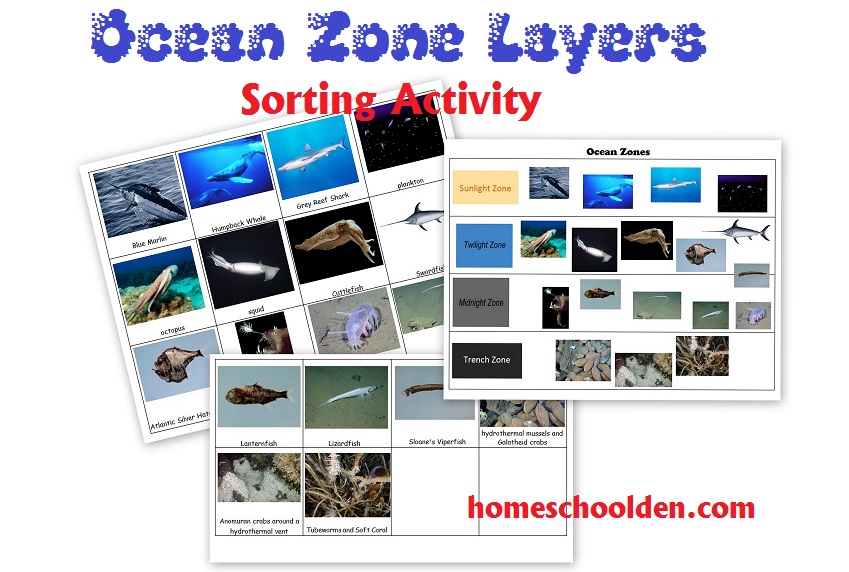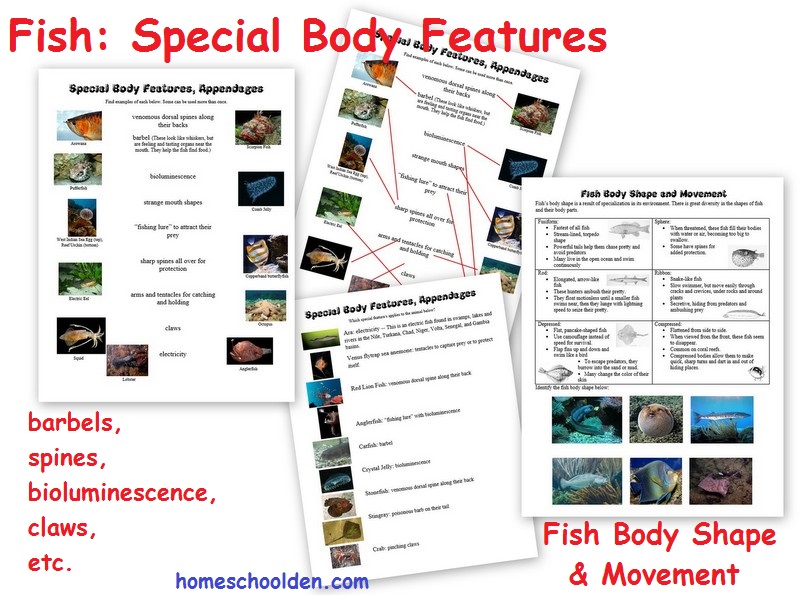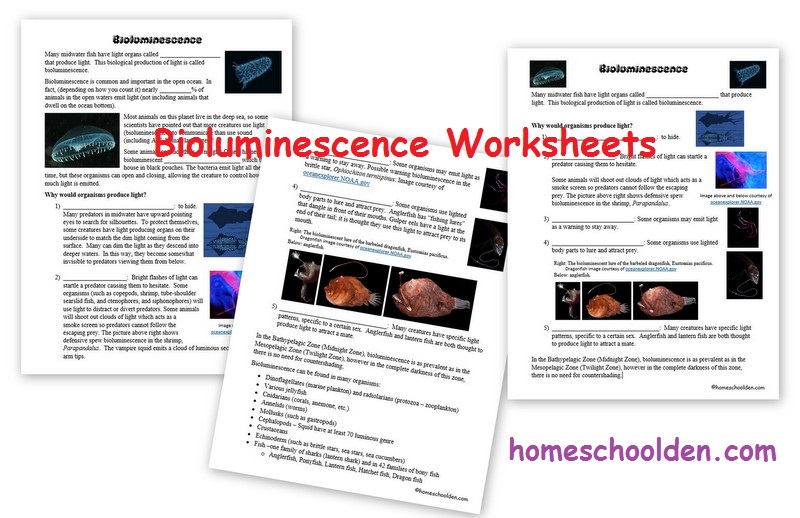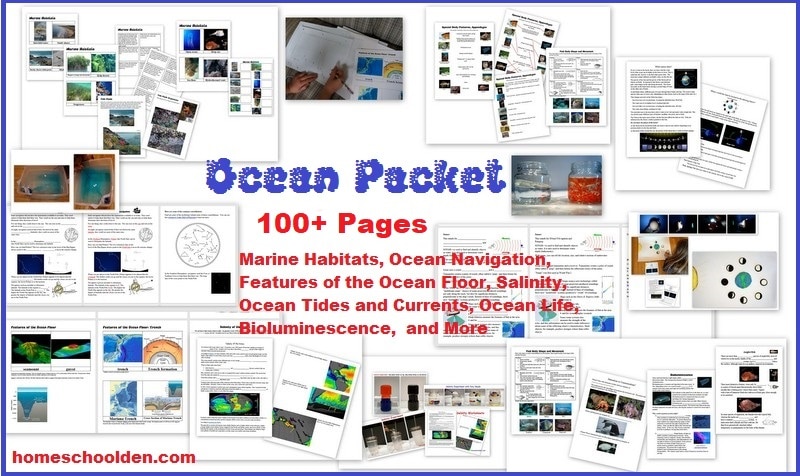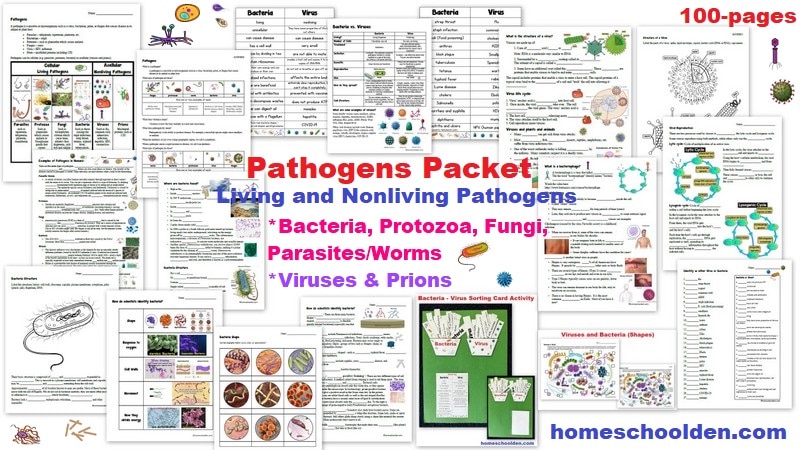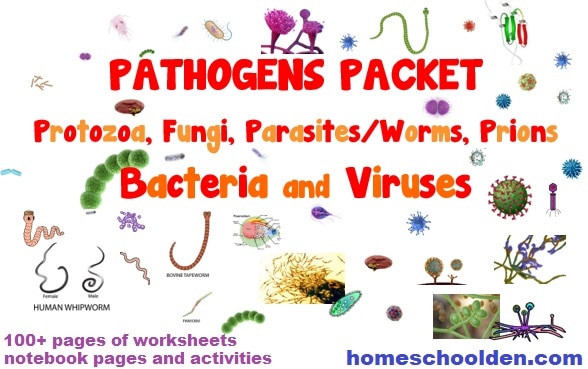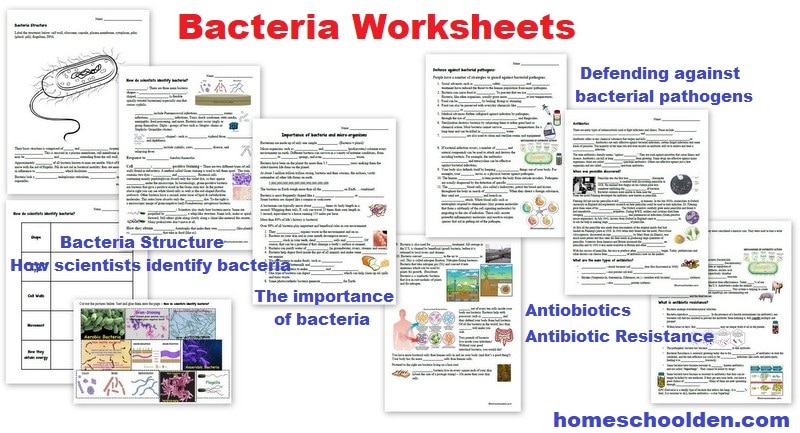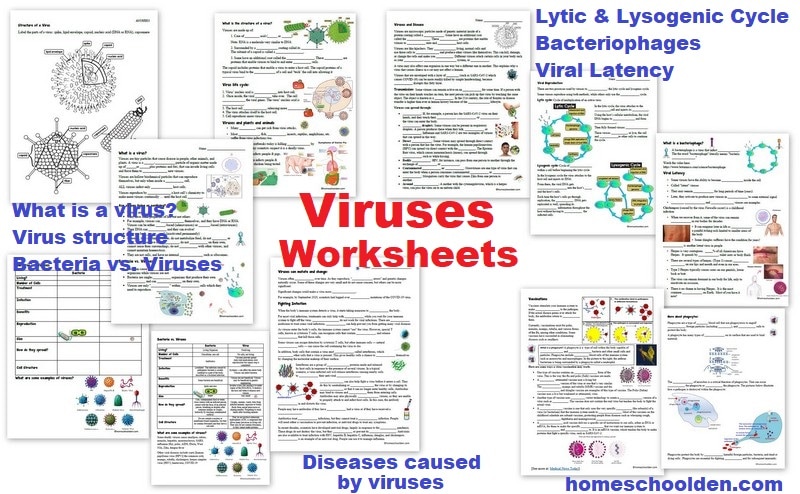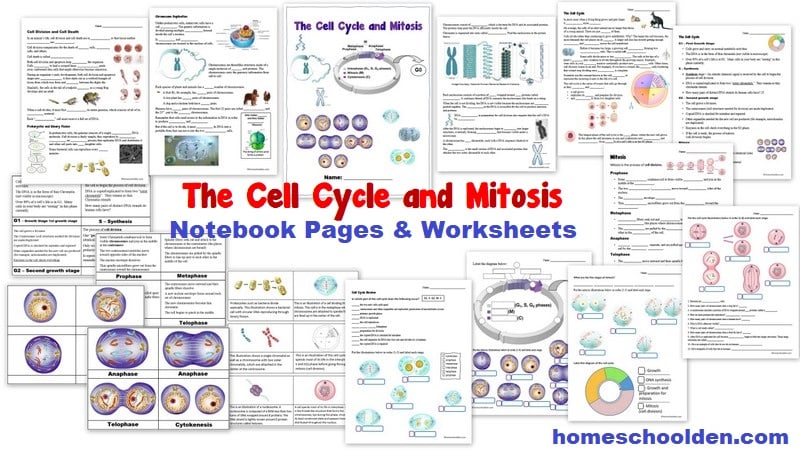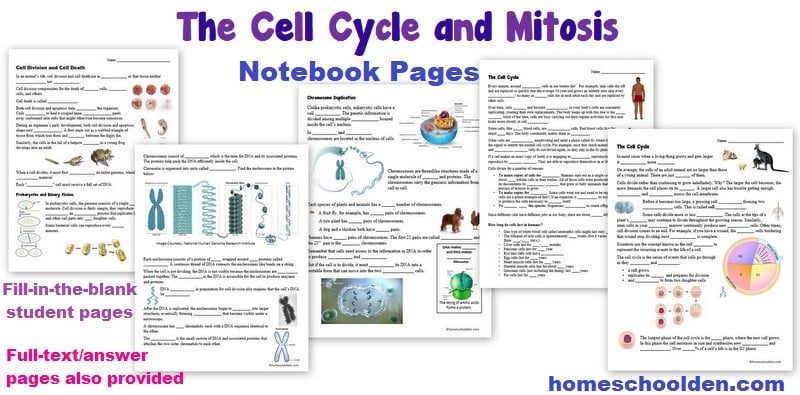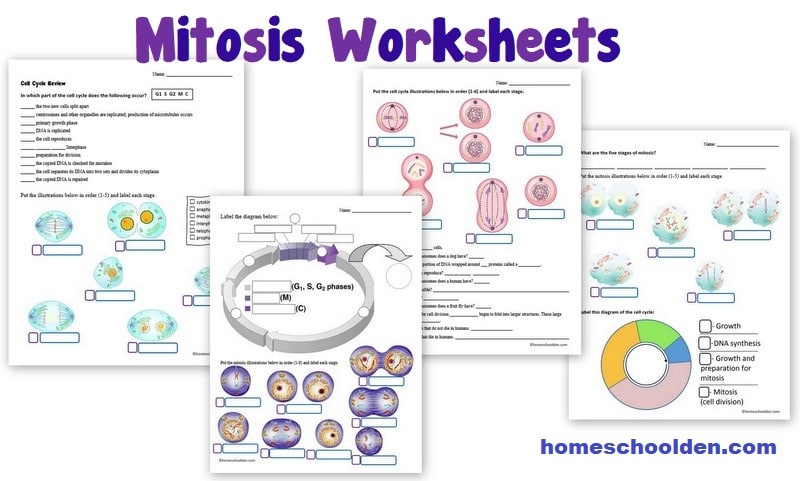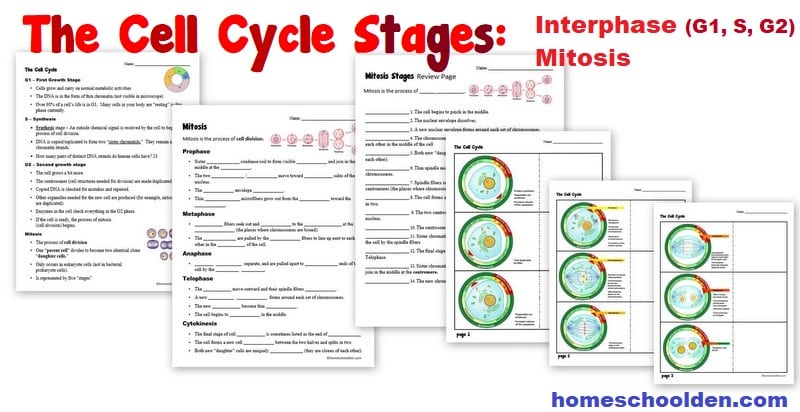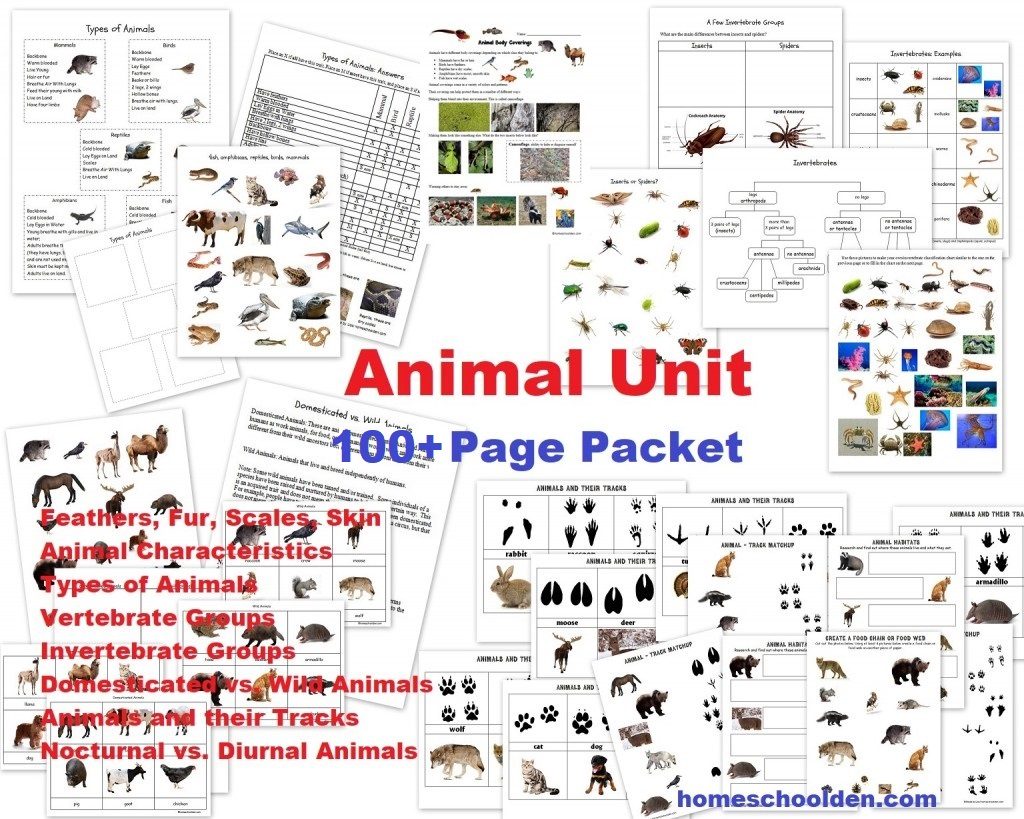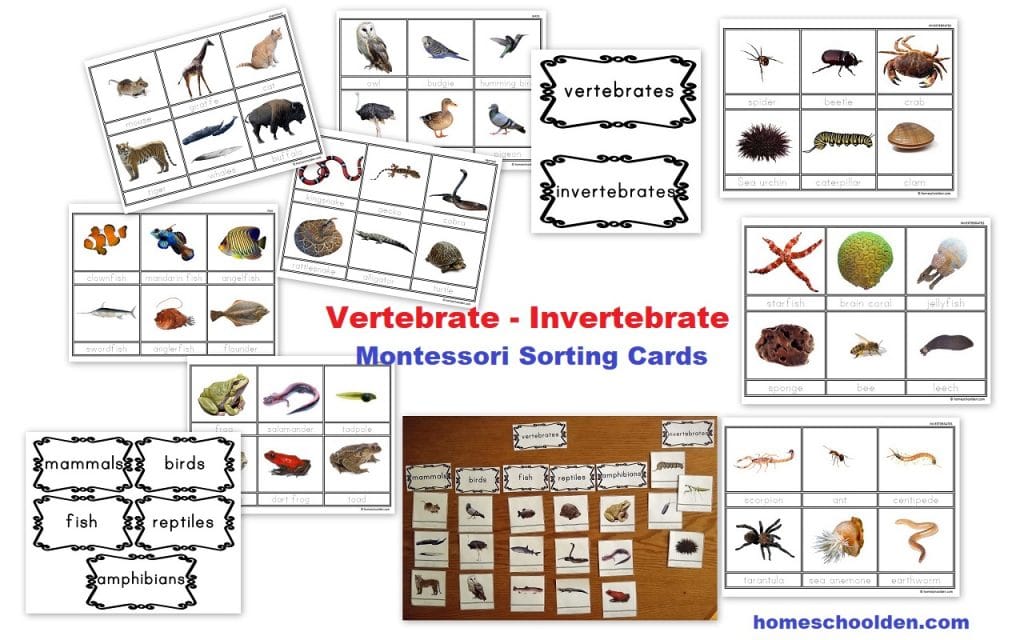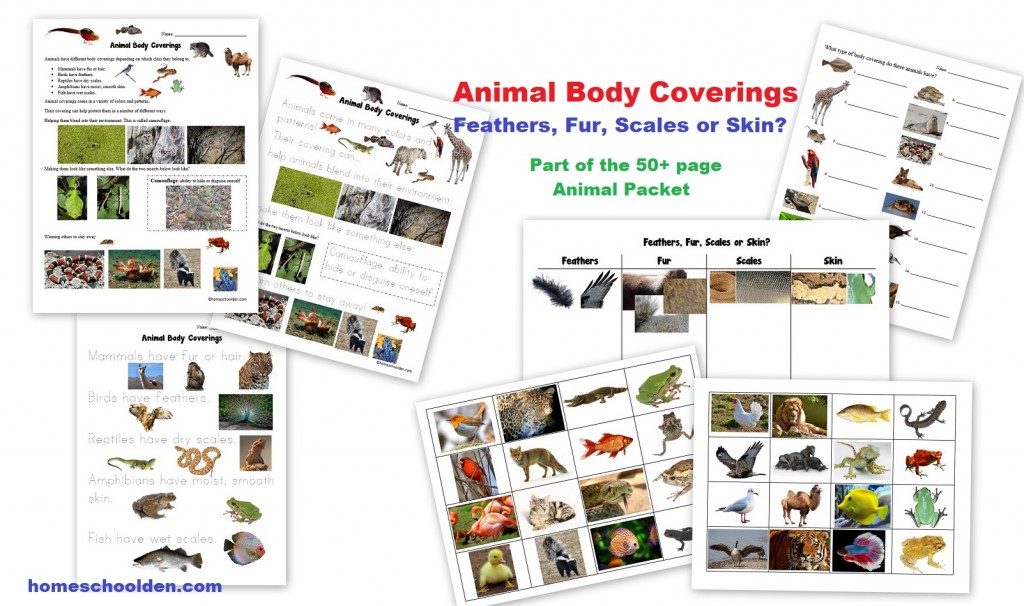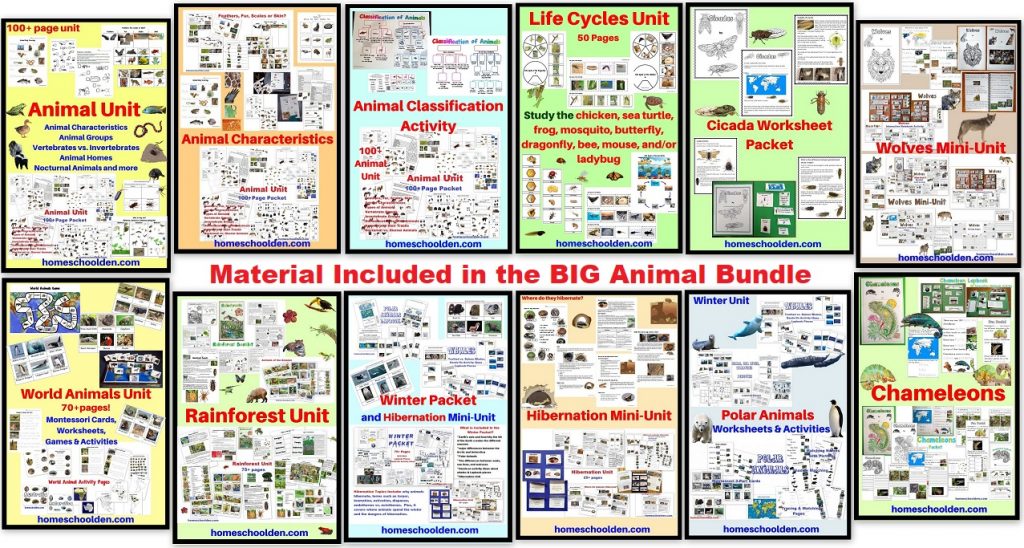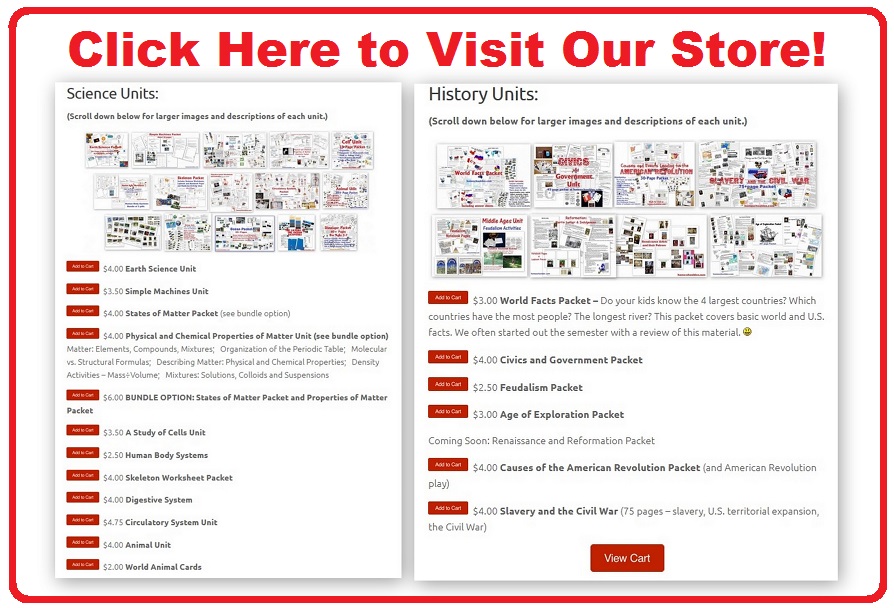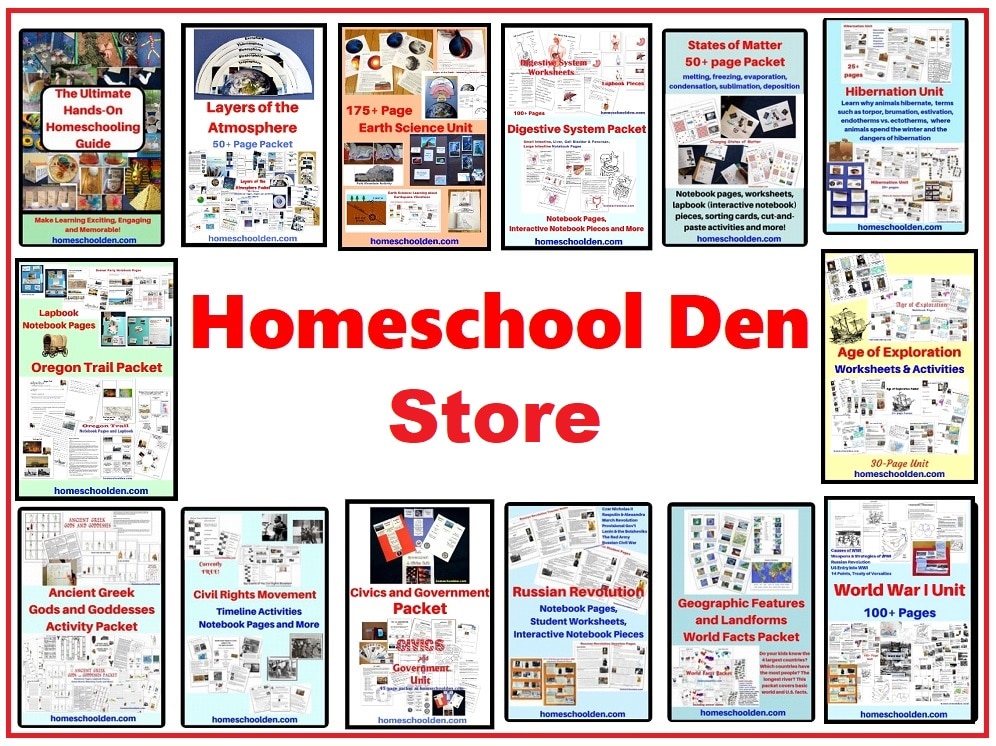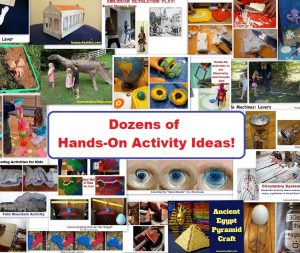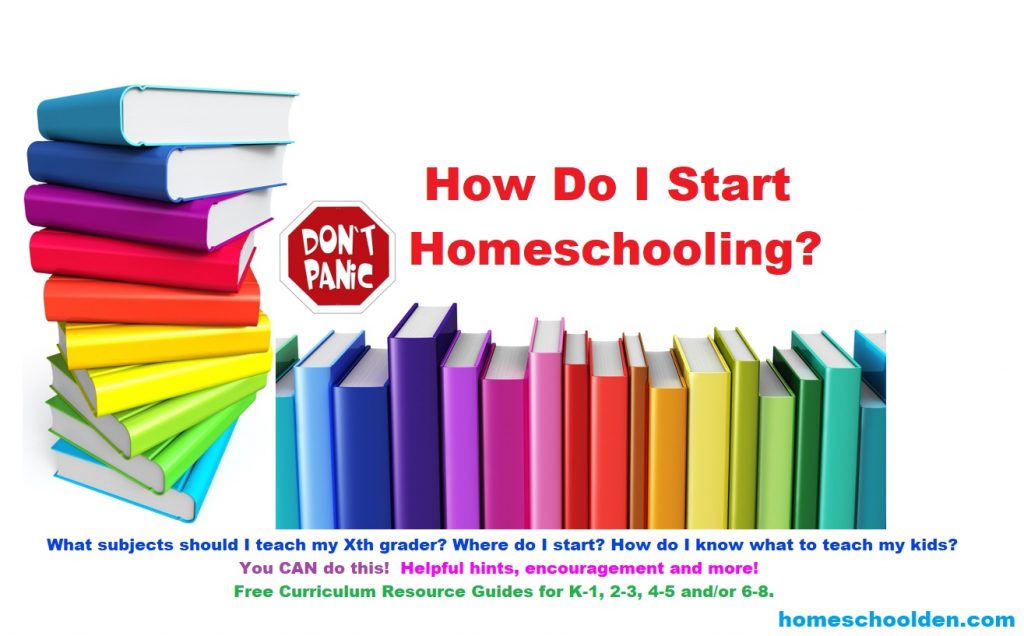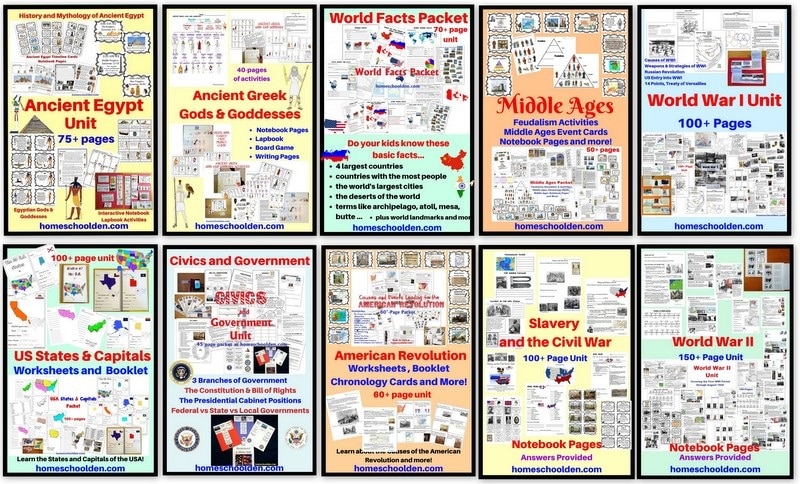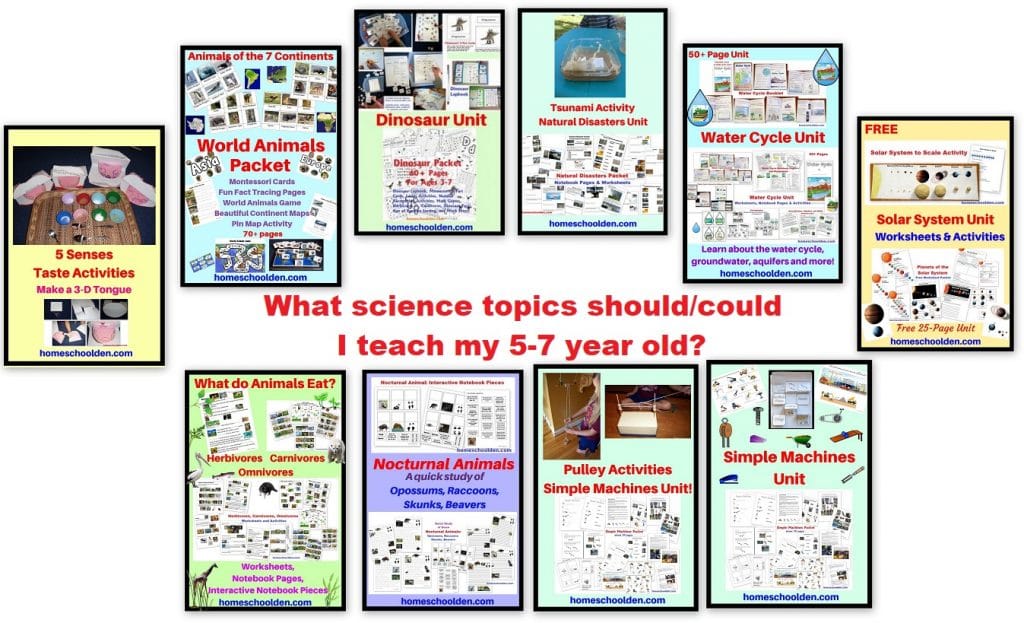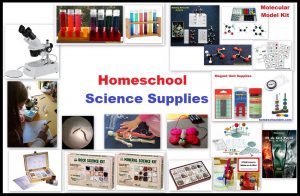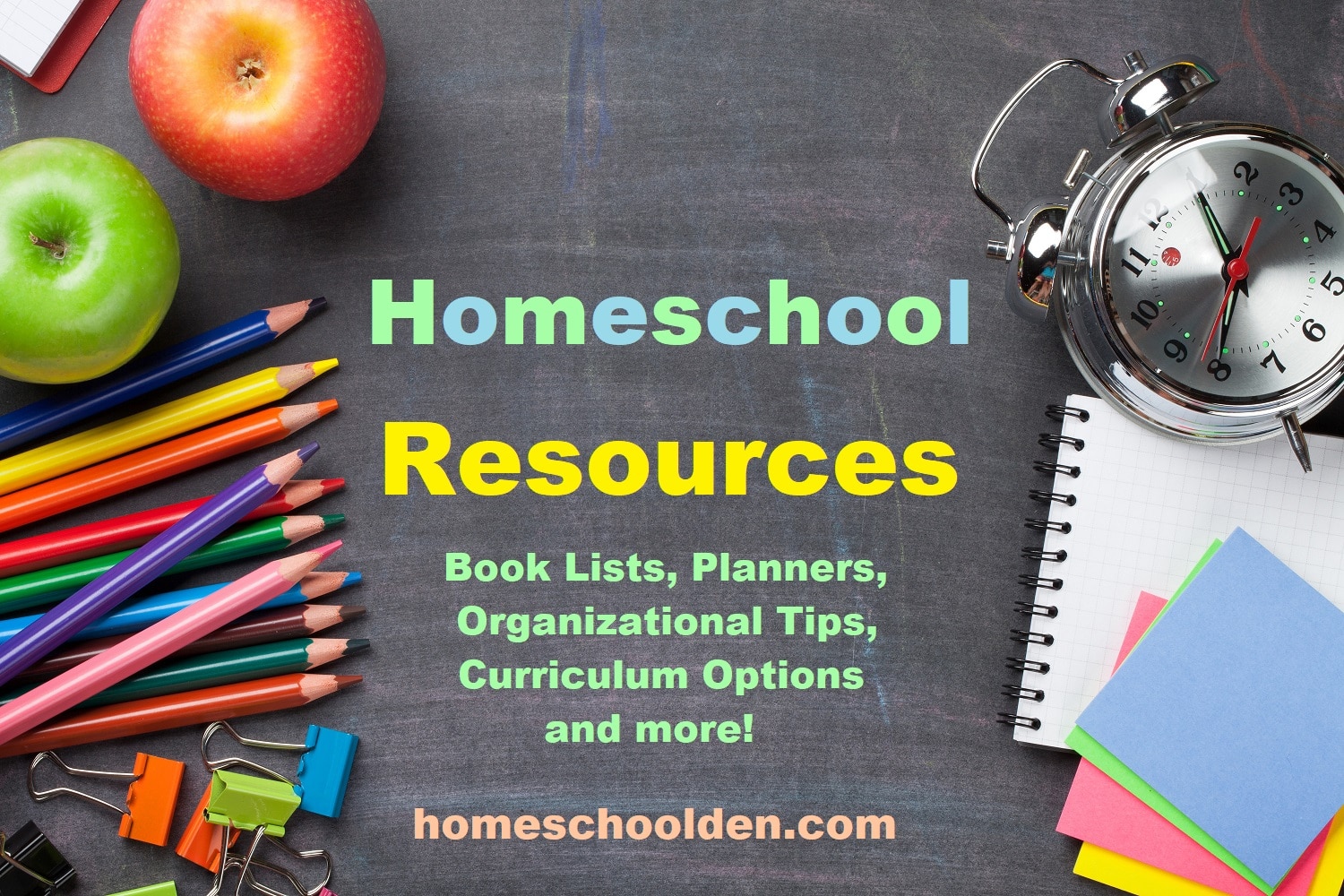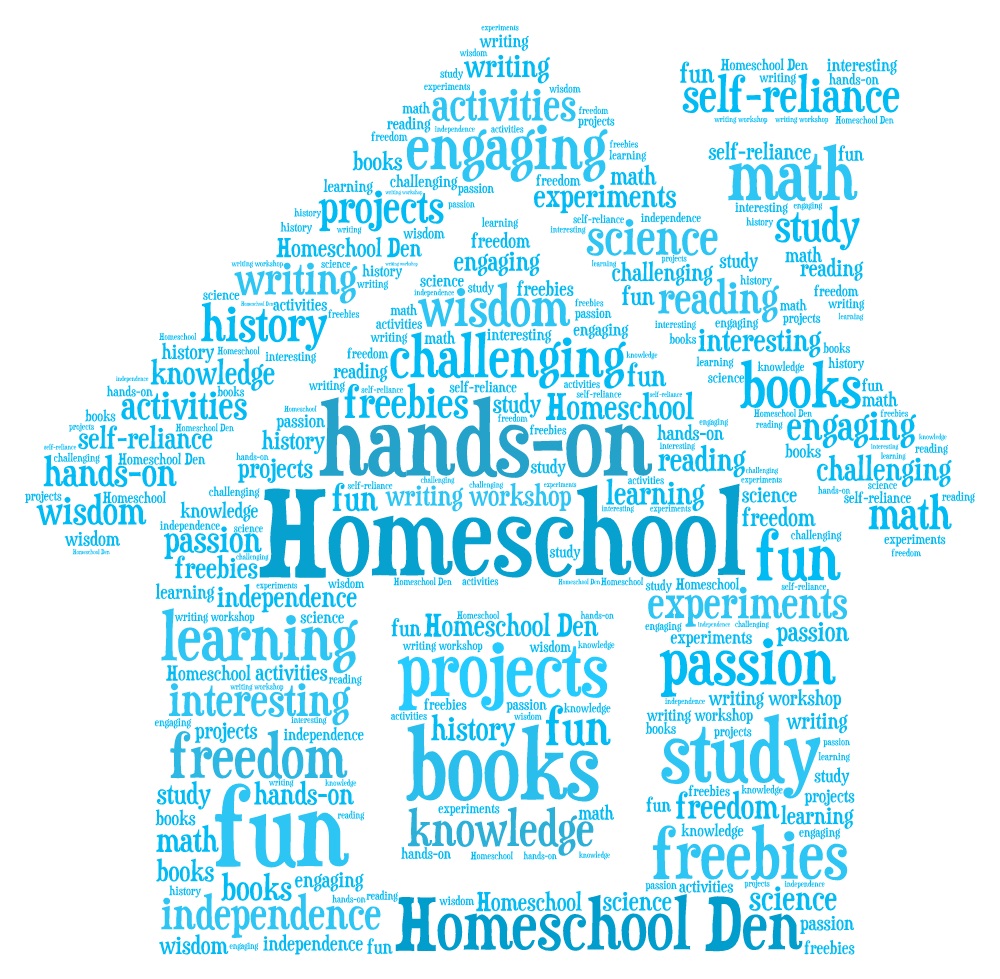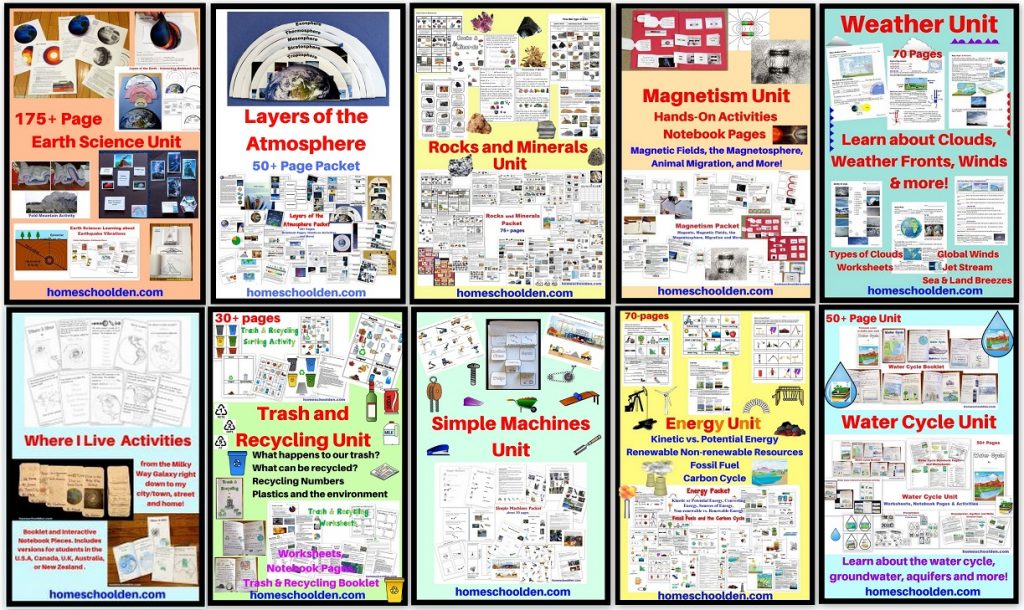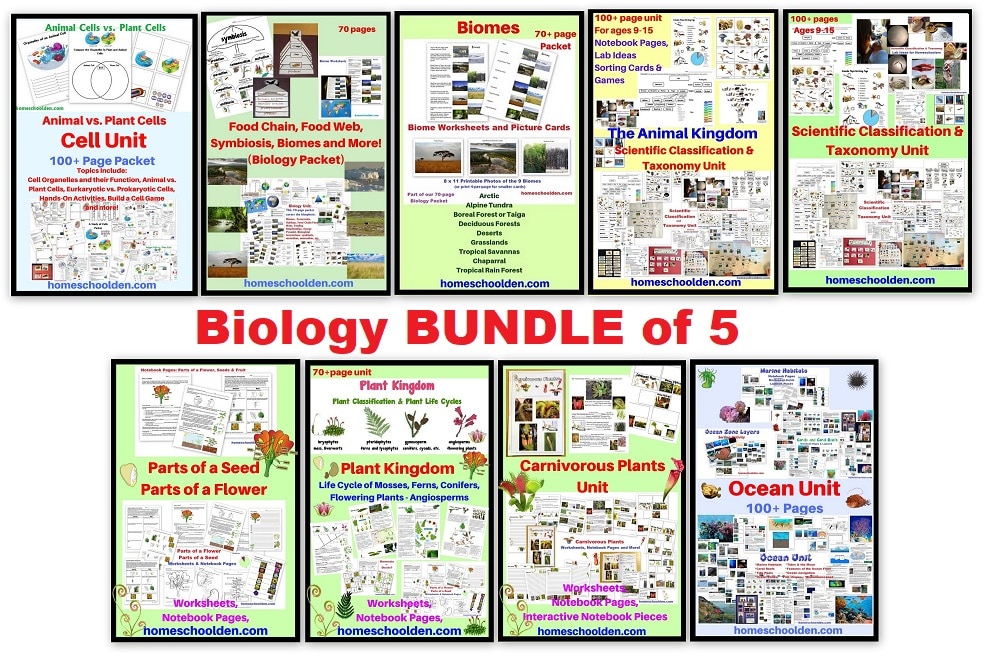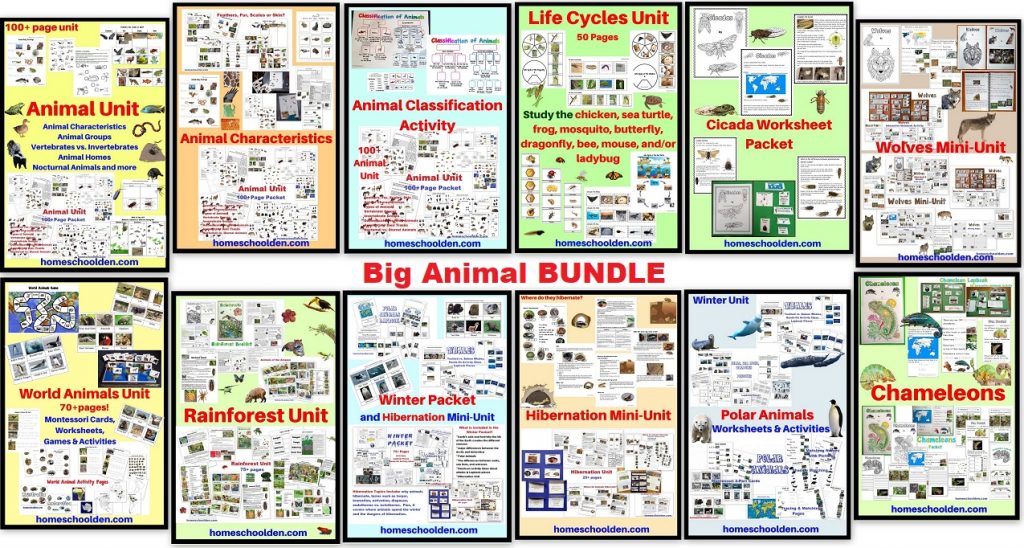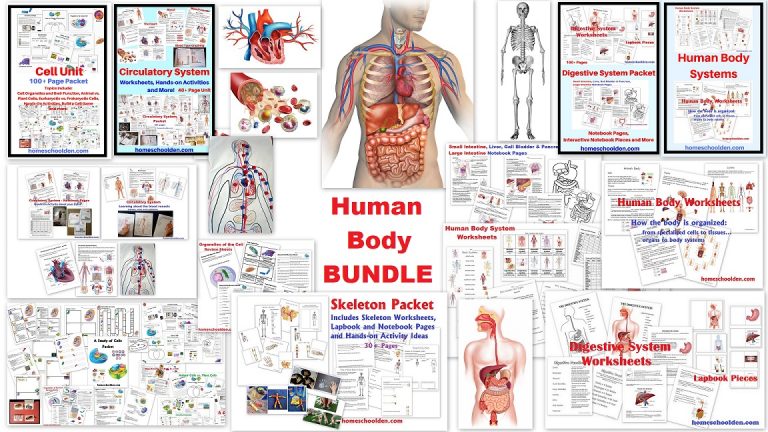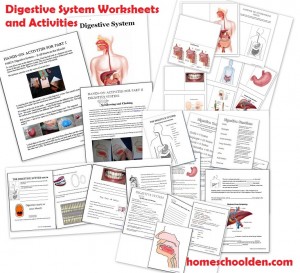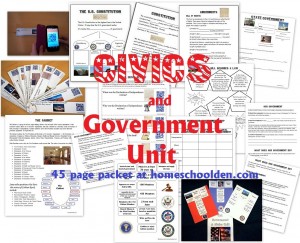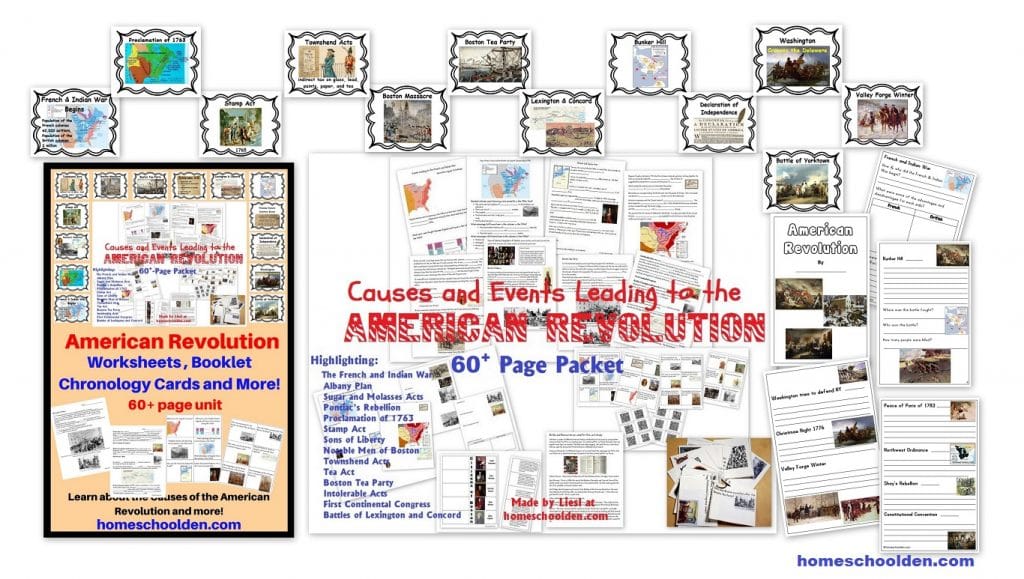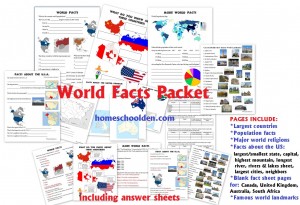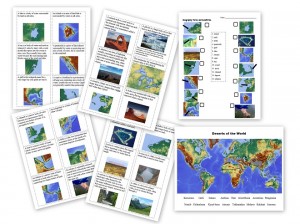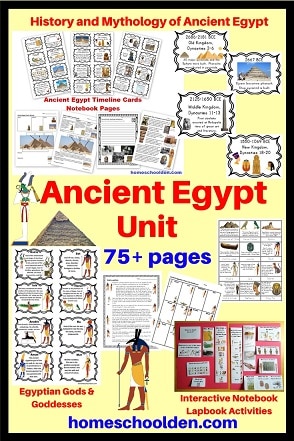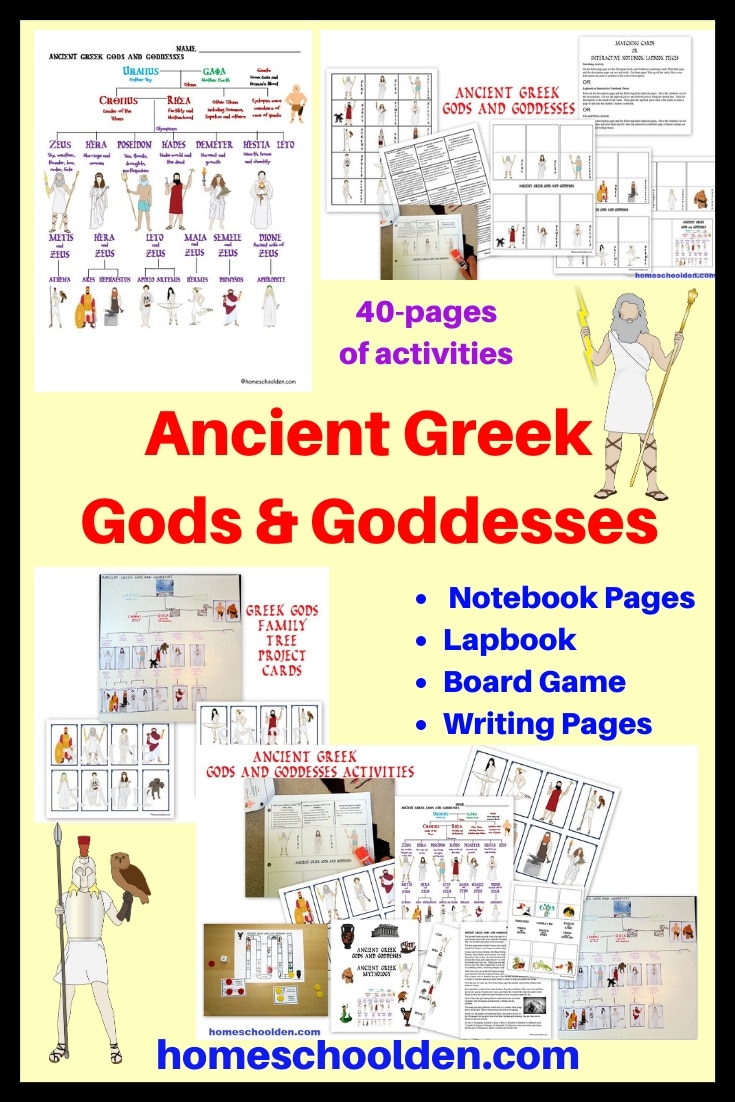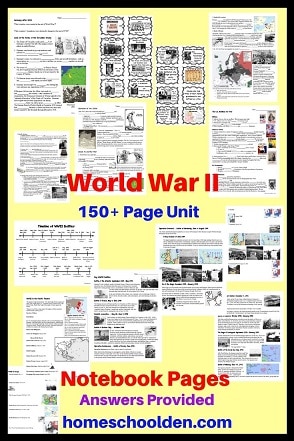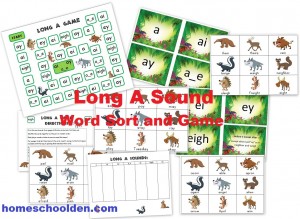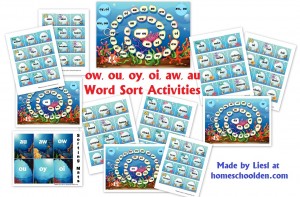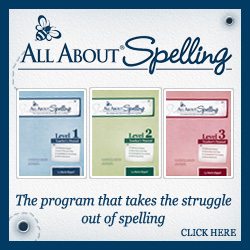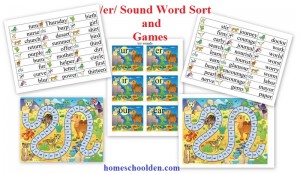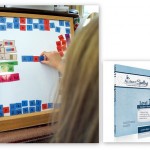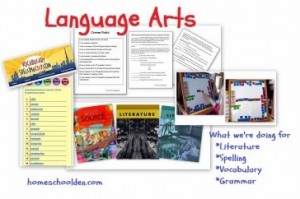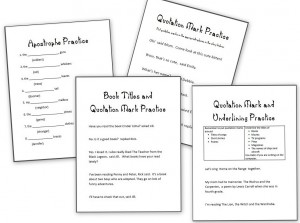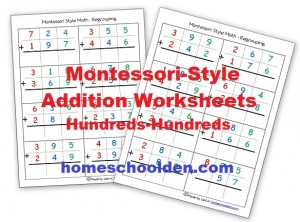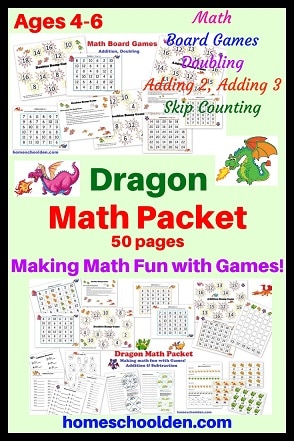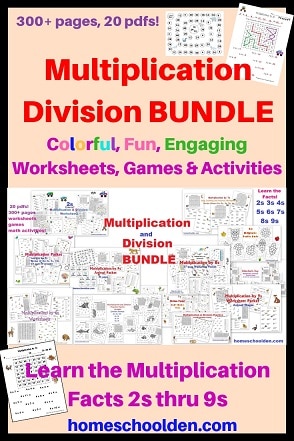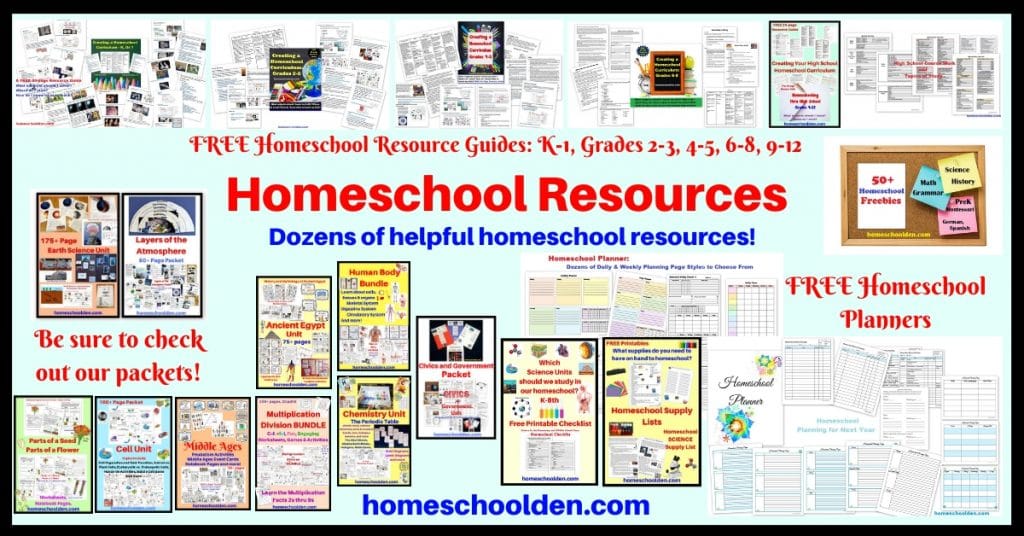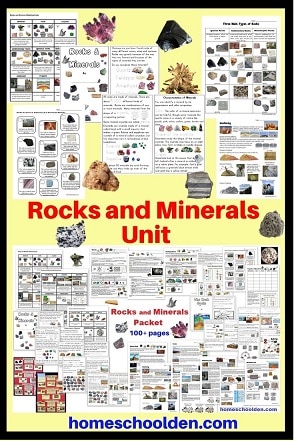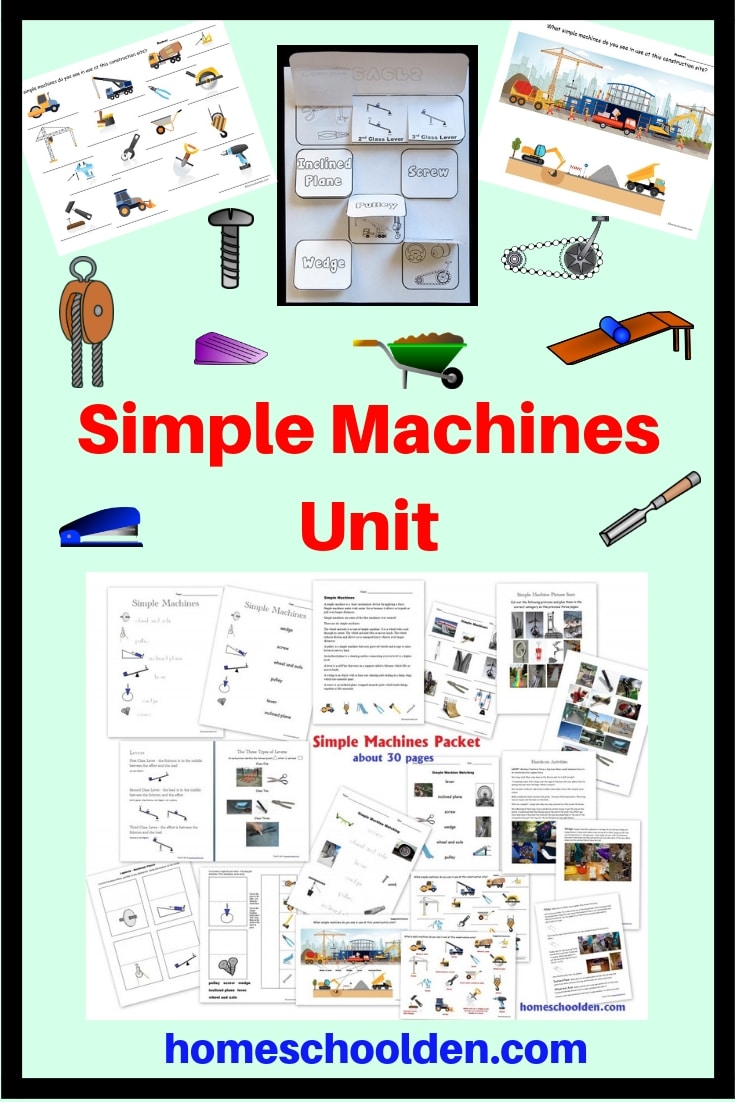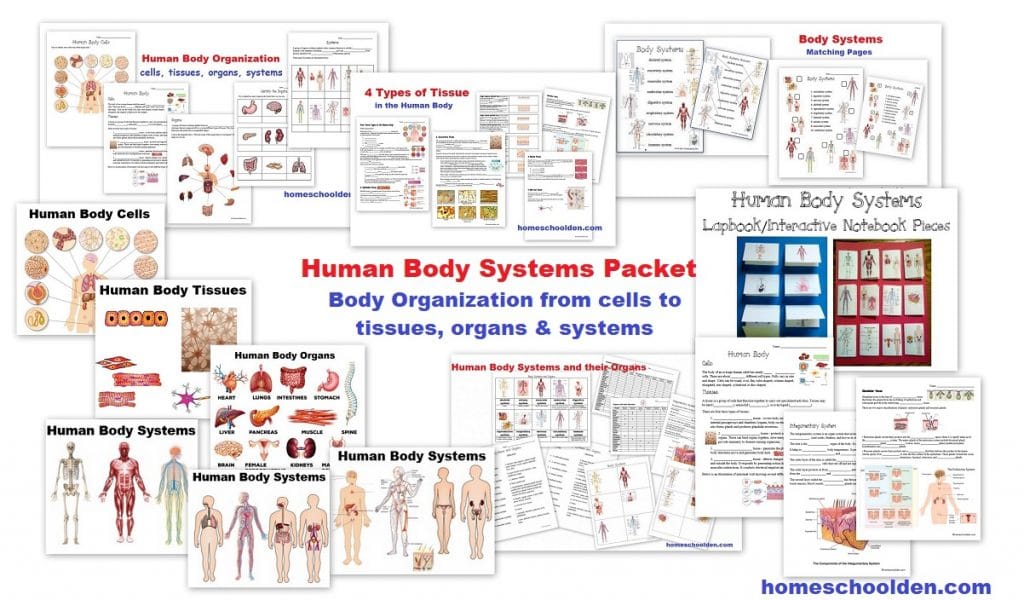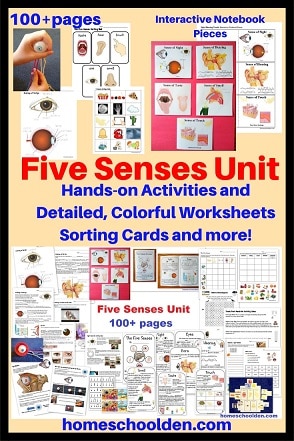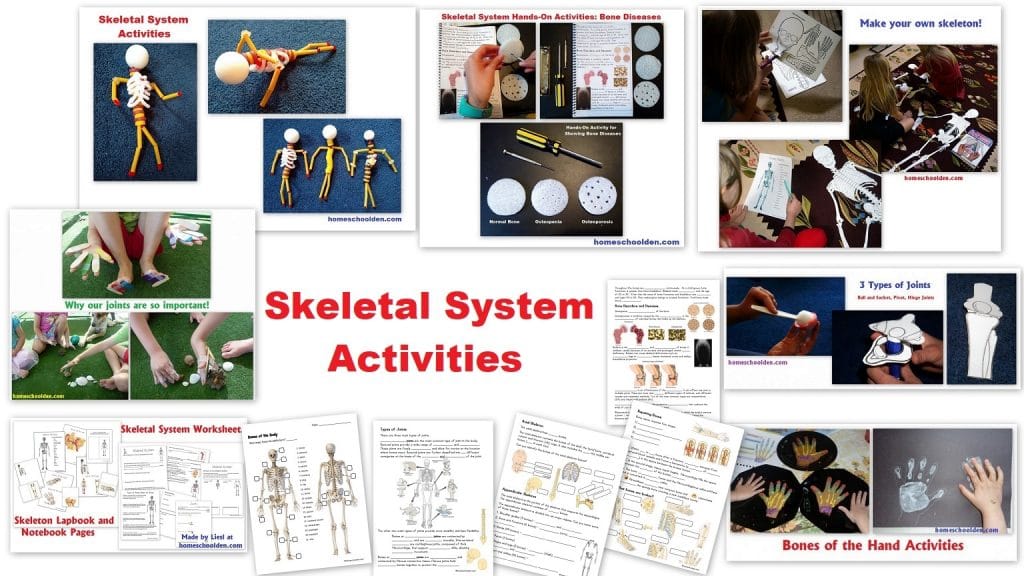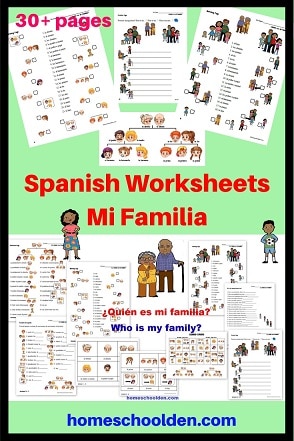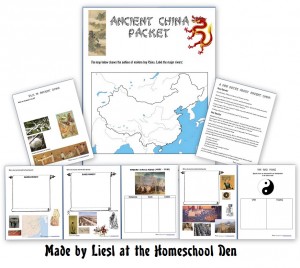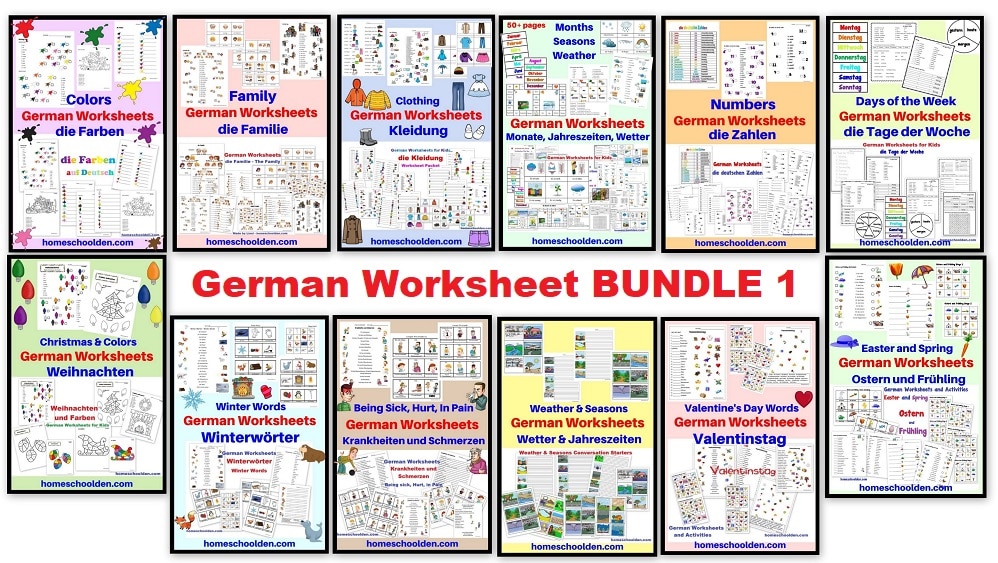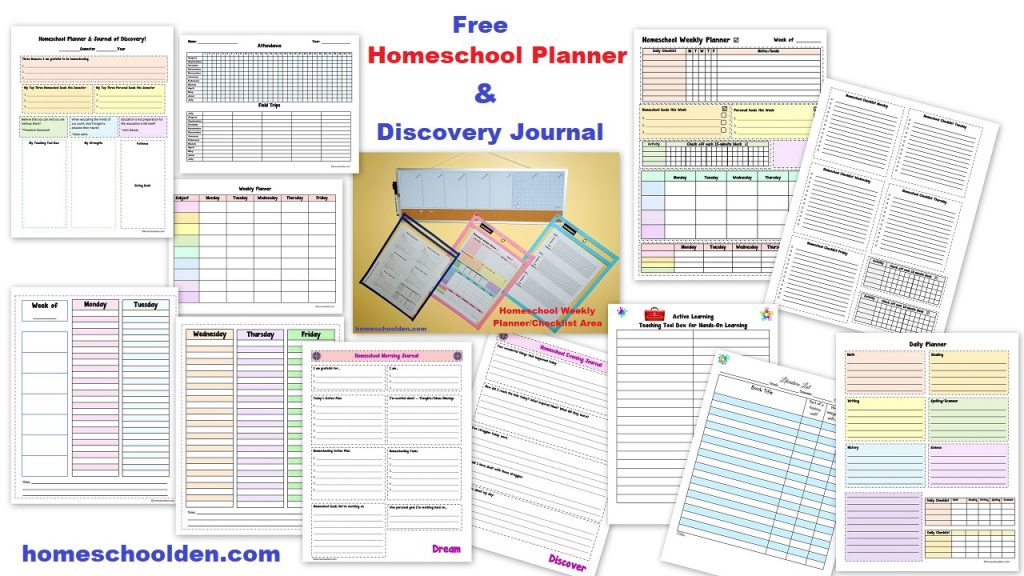Scientific Classification and Taxonomy Packet
What is taxonomy and why do we need to study it?! Taxonomy is the science of classification. Our biosphere supports more than 7 million known species and probably 4 or 5 million more unknown species! Taxonomists work on organizing the vast quantity of species. They are continually updating the classifications to keep up with new research and new discoveries.
What is in the Scientific Classification and Taxonomy Packet?
Scientific Classification and Taxonomy Quick Preview
As we started off this unit, we started off by talking about why we classify things. We learned about the dichotomous key and did a number of activities to understand how they work. We talked about why classification is useful and how we can do that in a way that is organized and logical.
Then we went into more detail about the history of classification. Scientists have been grouping and categorizing different species for most of human history. In the past 300 years or so, scientists have worked on developing a logical, organized system for classifying the species around us.
All living organisms are classified by their characteristics. We keep adding to and adjusting the classification system as new evidence become available through DNA research and molecular studies! We talked about Linnaeus and his contributions to the classification of animals and his system of naming organisms (binomial nomenclature).
We talked about the current system of classification and by the end of the unit, the kids were readily able to identify the types of organisms that have been classified as Bryozoa, Platyhelminthes, Porifora and other phyla in the Animalia Kingdom.
We did a number of hands-on activities studying and observing various species and even did some simple dissections at the end of the unit.
Note: This packet has recently been updated an is now over 100 pages.
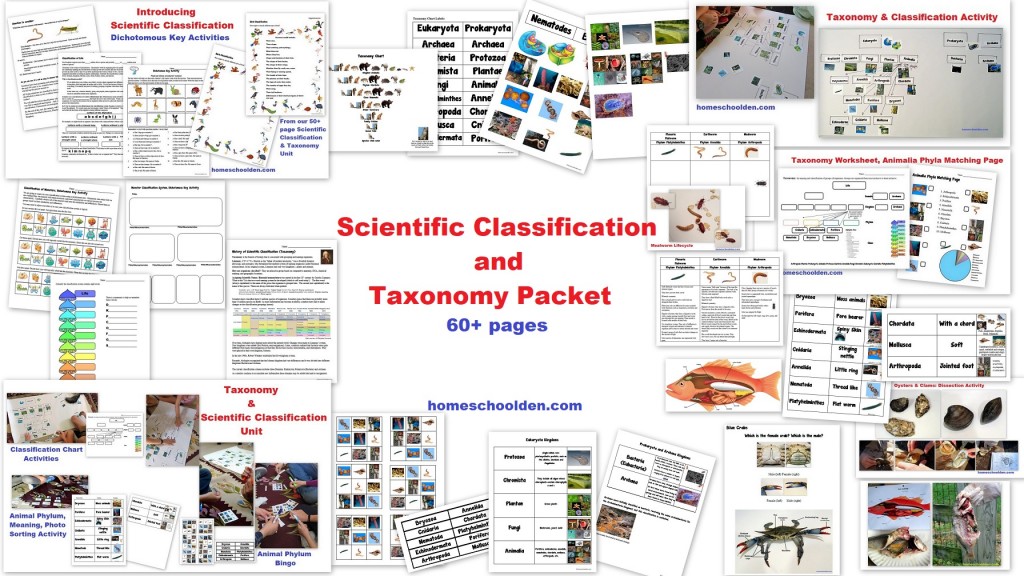
Classification – How and why we classify animals; Dichotomous Key Activities
When we started on this unit, I wanted the kids to understand how difficult it is to classify organisms into groups that make sense. We started with a silly exercise – classifying the letters of the alphabet. They learned about the classification tool called a dichotomous key. They used a key to answer a series of questions to find out the proper names of a set of cartoon characters (see the middle sheet below). After going through the series of choices they came up with the correct names for all of the cartoon characters.
Before creating their own dichotomous key, they brainstormed about all the different ways birds can be grouped (by size, beak shape, foods they eat, and so forth). See the picture above right.
Monster Dichotomous Key Activity: Then they were given a set of monsters. They had to cut them out and place them into groups:
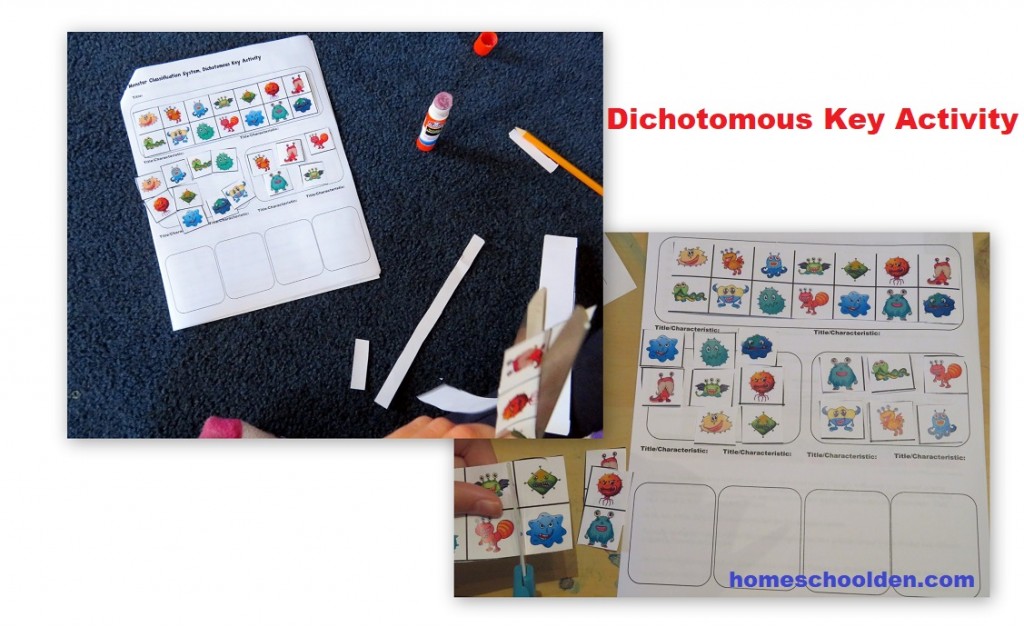
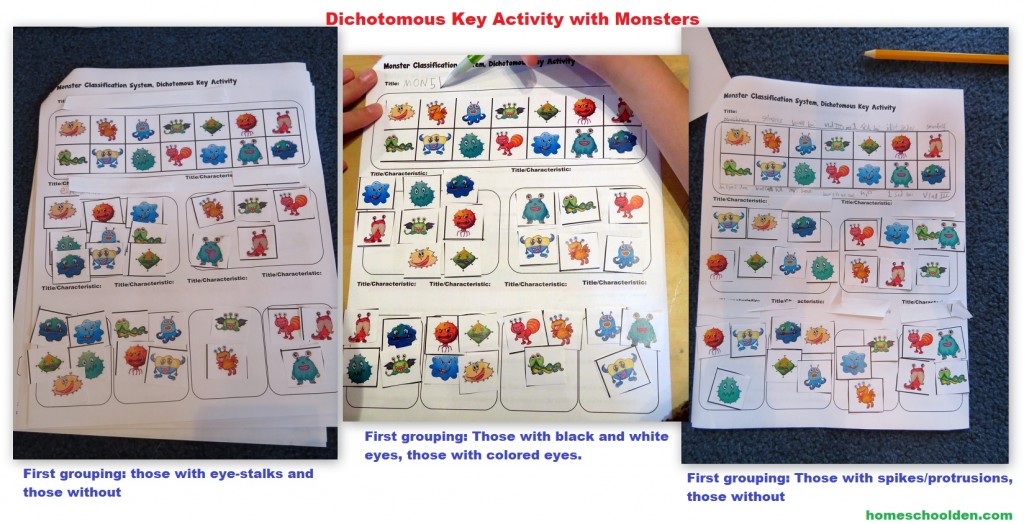
We also looked at a taxonomy chart (for domestic cats) and talked about the way organisms are named (by genus and species). The reference sheet (below right) explains the human taxonomy chart and groupings.
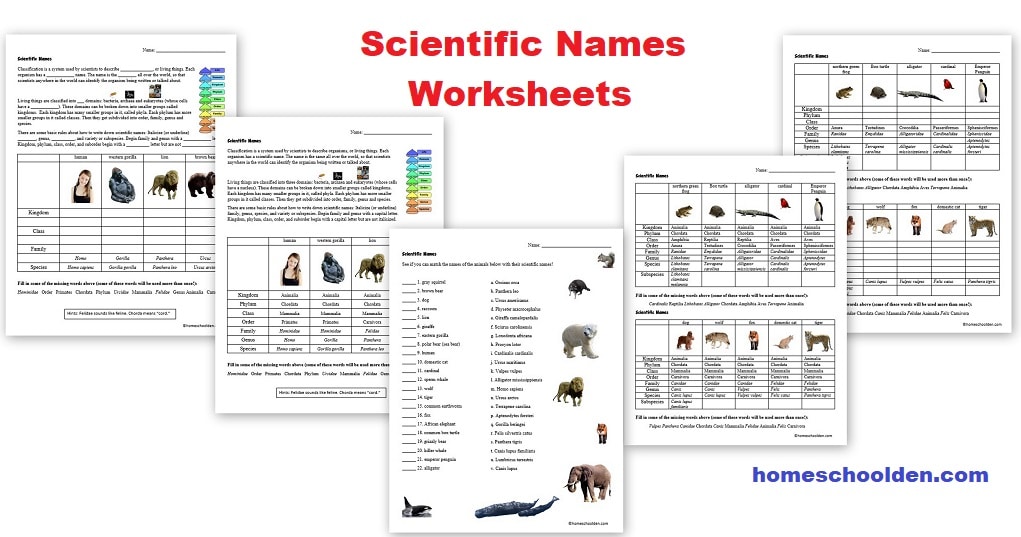
- Domain
- Kingdom
- Phylum
- Class
- Order
- Family
- Genus
- Species
Then, we started diving into understanding the modern taxonomy chart. We spent several weeks talking about the 3 domains, the kingdoms and 10 (of 35 or so) animal phyla (and doing various hands-on activities, observations and even a couple of dissection activities!). By the end and after doing all the various games and activities, the kids could identify the major characteristics of annelids, chordata, nematodes, porifora and so forth!
I made a poster-sized chart that we used frequently as we learned about the different characteristics. (In the packet, there is information for teachers about these different characteristics.) There are printable labels that the kids used to sort:
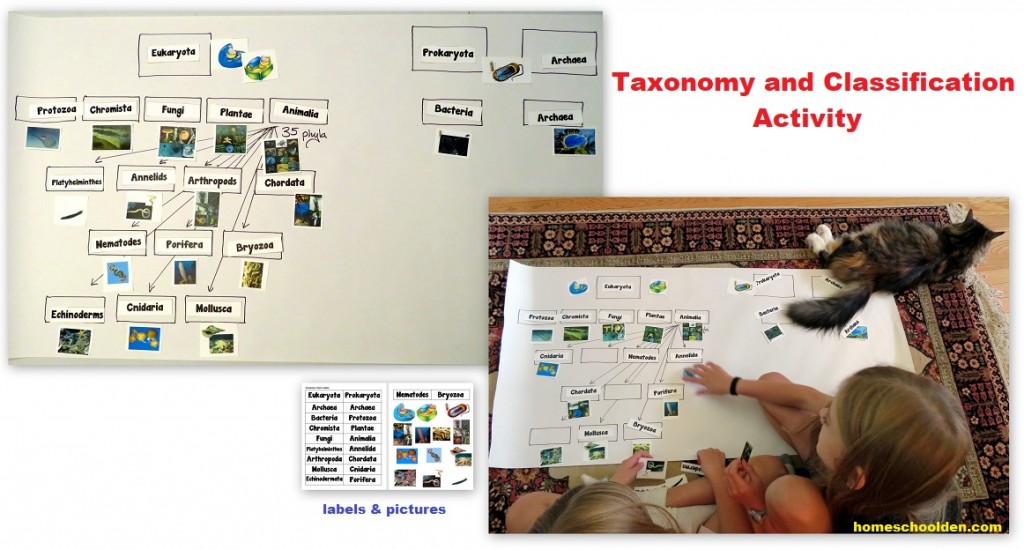
Some of the games/activities we did over the course of our study included
- labels and photos (for the poster)
- sorting cards (name, the meaning and photo)
- bingo game (this was a huge hit!)
- matching page
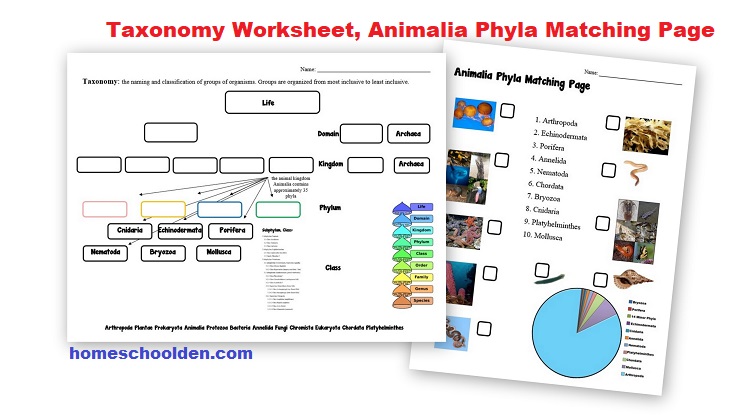
- Cut out the labels. Mix them up, place them face down.
- Each player takes turns, reads a card and makes a mark on the bingo card.
- There are 10 name labels, but 9 pictures on each bingo card.
- If they draw a label that does not have a picture, they get to go any place they want. (It’s a wild card!) Let’s say they place their mark on the Annelid/earthworm picture.
- If the other player then gets that label (the Annelid card), they lose a turn.
- But, if the original player gets that label (the Annelid card), they again get to go wherever they want!!
- The first player to get 3-in-a-row wins the game!
- There are 6 different bingo cards included in this packet.
Hands-On Activities: In this unit, we also spent time studying, observing and talking about (and even dissecting) different organisms: mealworms, earthworms, Planaria (a flatworm from the Platyhelminthes phylum), brine shrimp, oysters and clams, blue crabs, and fish.
I included some of the notebook pages, teacher notes, and helpful worksheets that I created in the packet. There is also a fish anatomy page included.
You could study some or all of these as you cover this material with your students. 🙂
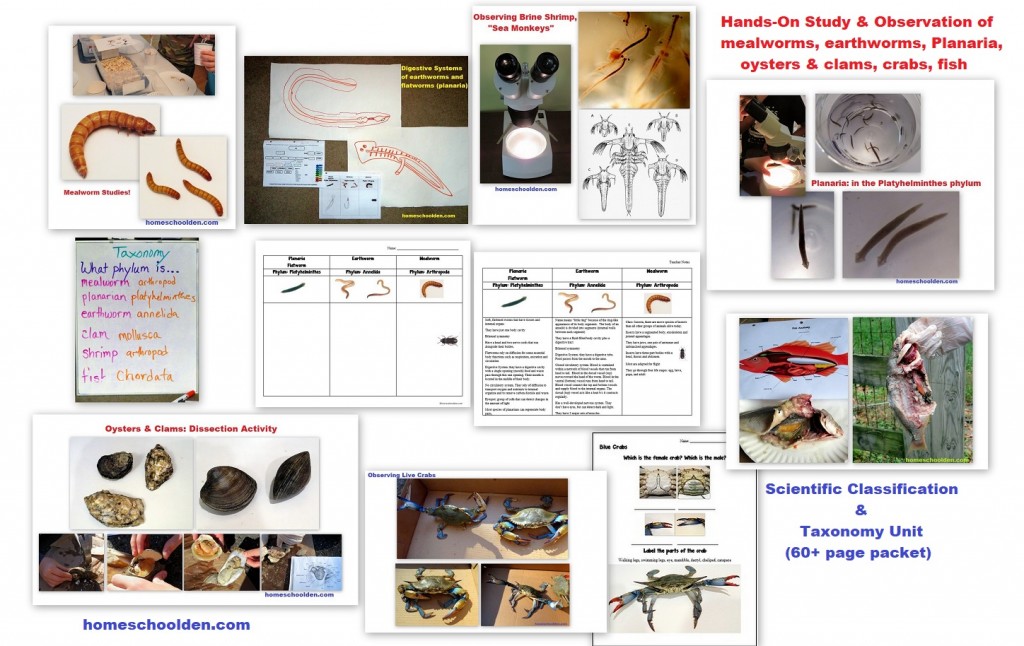
Age range: My kids were ages 9, 12, and 15 when we did this unit. I recommend the Scientific Classification and Taxonomy Packet for upper elementary and middle school. Before doing this unit, my kids were pretty familiar with the different types of cells and cell organelles. It is not necessary, but useful to go over that information before starting this unit. (You can check out our Cell Unit here (or with the link at the end of this post).
This packet is well over 100 pages.
Scientific Classification & Taxonomy Packet is $7.99.
Our units are PDF digital downloads. After your purchase, remember to check your PayPal email address for the download link. This page answers some Frequently Asked Questions. Feel free to email me if you have any questions! ~Liesl
Note: This packet is included in the Biology Bundle (see below or the Biology BUNDLE page).
Cost: $7.99
Remember to check your PayPal address for the download link. It may take a few minutes, but you will get an automatic email from SendOwl with your download link.
You might also be interested in our other biology units. Find out more by clicking the links below or you can add them to your shopping cart using the buttons below.
These are all available in Our Store.
Biology BUNDLE OPTIONS:
Visit this Biology Bundle Page for more details (and lots more pictures!)
$44.99 Biology BUNDLE of 7: 1) Biology Unit (Biomes, habitats, food chains/webs, feeding relationships) 2) Scientific Classification & Taxonomy Packet 3) Ocean Unit & Layers of the Ocean/Ocean Zone Activities 4) Cells Unit 5) Botany Unit 6) Pathogens Unit – Bacteria, Protozoa, Fungi, Parasites/worms; Viruses and Prions 7) New! The Cell Cycle and Mitosis
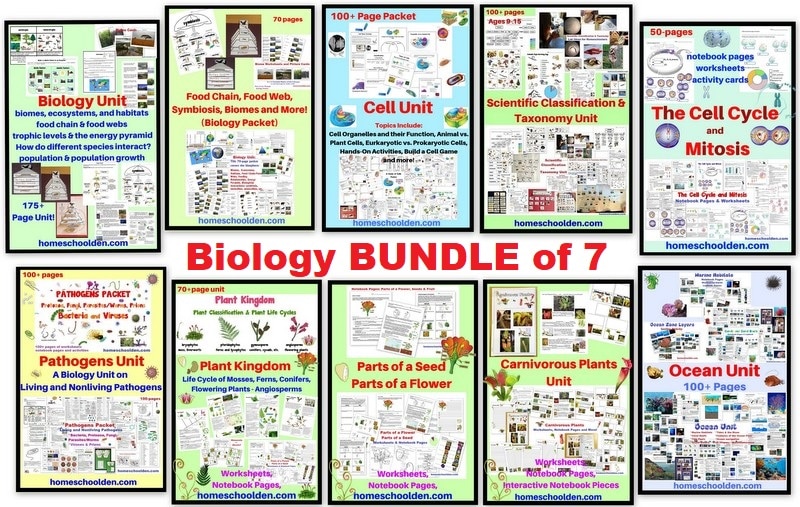
$8.99 Biology Unit: Biomes, habitats, ecosystem, biological interactions, feeding relationships (170 pages)
$8.99 Cells Unit (150+ pages) – cell theory, prokaryotic vs. eukaryotic cells, animal vs. plant cells, organelles of the cell, chloroplast anatomy, the layers of a leaf, photosynthesis and more.
$7.99 Botany Packet — (80 pages) Plant Classification, Life Cycle of the Moss, Fern, Conifer, Angiosperms, Parts of a Flower, Parts of a Seed, Seed & Fruit Development, Monocots vs Dicots – plus Carnivorous Plants Mini-Unit
$8.99 Ocean Unit – Layers of the Ocean/Ocean Zone: (100+ pages) Marine Habitats, Coral Reefs, Tide Pools, Water Form Words, Ocean navigation, Features of the ocean floor, salinity, ocean tides & currents, ocean life, bioluminescence & more!
$7.99 Scientific Classification and Taxonomy Packet (100 pages) dichotomous key activity, Linnaeus & the history of classification, learn the Animalia phyla (Annelids, Platyhelminthes, Nematodes, Cnidaria, Animalia, etc.)
$8.99 Pathogens Packet (100 pages) – This unit covers the six major living and nonliving pathogens: bacteria, protozoa, fungi and parasites/worms as well as viruses and prions. The large majority of this packet goes into detail about bacteria and viruses.
$5.99 The Cell Cycle and Mitosis Packet (50+ pages) – This unit covers topics/terms such as cell division, cell death (apoptosis), nucleosomes, histones, binary fission, chromatin, chromosomes, centromere, sister chromatids, and the lifespan of human cells as well as the stages of the cell cycle including interphase (G1, S, G2) and mitosis (prophase, anaphase, metaphase, telophase, cytokinesis)



Biology: Cell Unit
Cell Unit: (Now more than 150 pages) The Cells Unit covers cell theory, prokaryotic vs. eukaryotic cells, animal vs. plant cells, the organelles of the cell, and now goes into more detail about chloroplast anatomy, the layers of a leaf, photosynthesis, and more.
Biology: Botany Unit
Botany Packet — Plant Classification, Life Cycle of the Moss, Fern, Conifer, Angiosperms, Parts of a Flower, Parts of a Seed, Seed & Fruit Development, Monocots vs Dicots – plus Carnivorous Plants Mini-Unit
Biology: Scientific Classification and Taxonomy Unit
Scientific Classification and Taxonomy Packet: (Newly updated and now over 100 pages)
In this unit, we started off by talking about why we classify things. We learned about the dichotomous key and did a number of activities to understand how they work. We talked about why classification is useful and how we can do that in a way that is organized and logical.
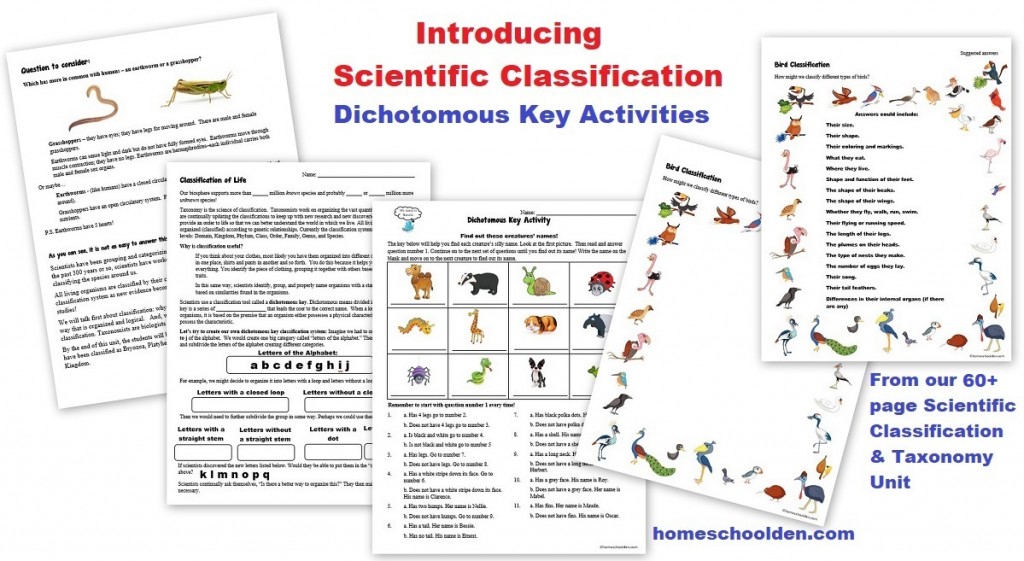
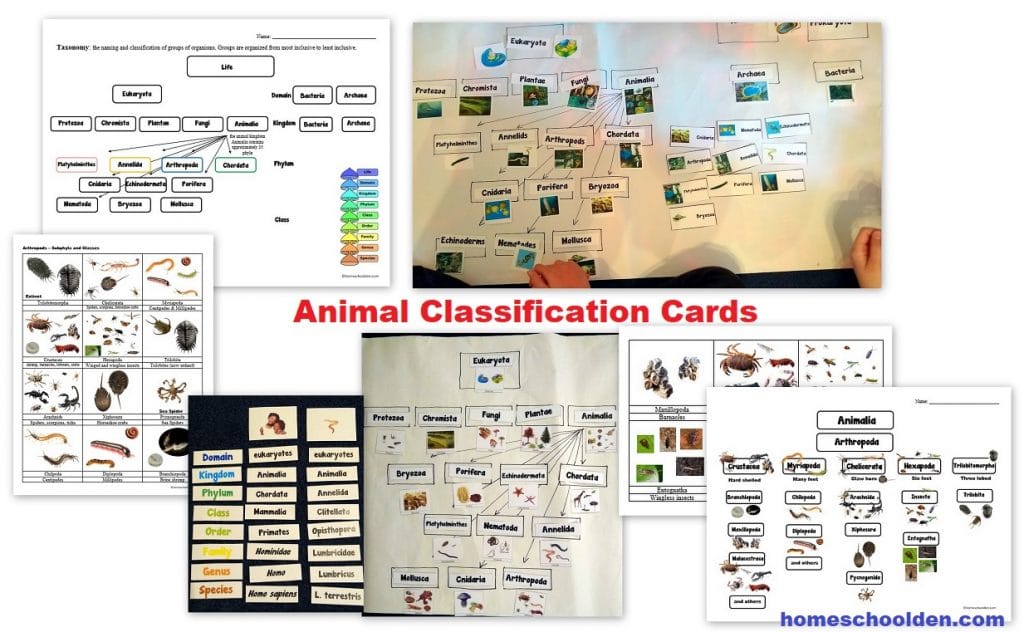
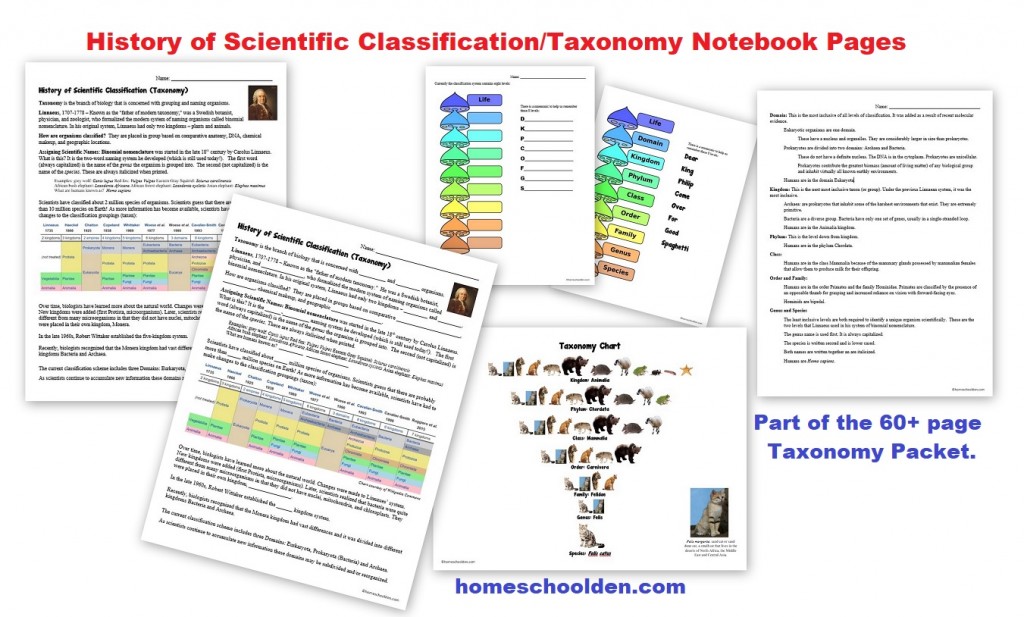
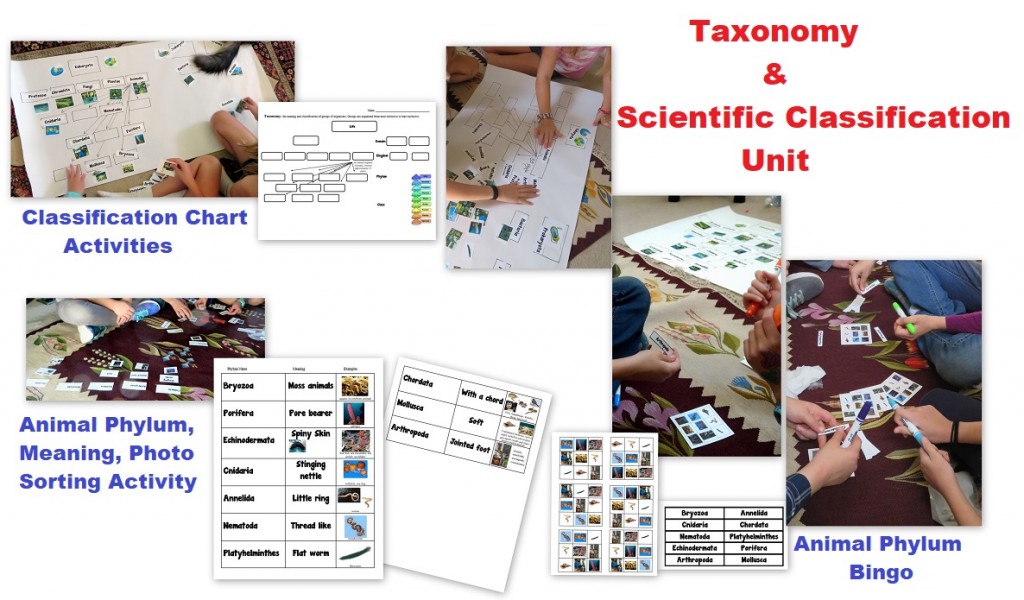
Biology: Ocean Unit
This unit is a study of the hydrosphere — Earth’s oceans, tides, marine life (including bioluminescent critters, and more!)
In our ocean studies we explored
- Marine Habitats
- Coral Reefs
- Tide Pools
- Water Form Words (bay, estuary, lagoon, fjord, etc.)
- Features of the Ocean Floor (trench, seamount, guyot, etc.)
- Ocean Navigation (early navigation with astrolabes & the constellations, modern SONAR)
- Salinity
- Tides (and the phases of the moon)
- Ocean Currents (Surface & Deep Sea Currents)
- Ocean Life:
- Special Body Features
- Fish Body Shape and Movement
- Biological Interactions: Mutualism and Commensalism in the Ocean
- Deep Sea Life – Bioluminescence, Anglerfish
We also talked about the ocean zones and different layers of the ocean again (which we covered three or four years ago).






 Pathogens Unit:
Pathogens Unit:
In our unit on Pathogens, kids will learn about Bacteria & Viruses Protozoa as well as Fungi, Parasites/Worms and Prions. They’ll learn the answers to these questions:
- What diseases are caused by bacteria? viruses?
- What causes malaria? Yes, mosquitoes carry it, but did you know protozoa actually cause the disease?!
- What kinds of diseases can you get from fungi?
- What are prions? How do they cause diseases?
- What is the structure of bacteria? of viruses?
- How do they replicate?
- What causes mumps? typhoid fever? tetanus? rabies? small pox? the flu? strep throat? cholera? By the end of this unit, you and your kids will know what causes these diseases and more!!
Animal Unit
For younger student, you might want to check out the Animal Unit:
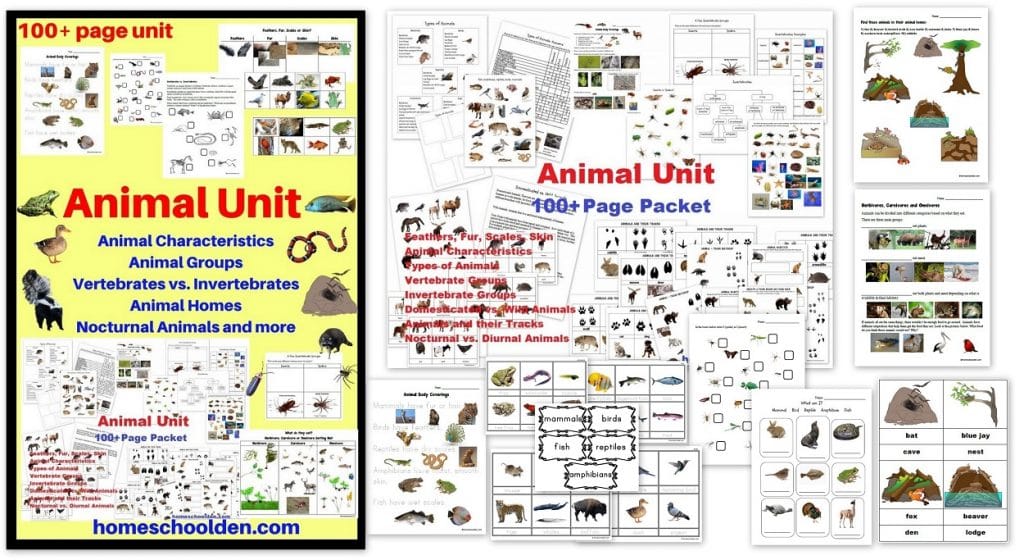
Or you may want check out the Big Animal BUNDLE:
The Big Animal BUNDLE includes 8 packets. 1) Animal Unit, 2) World Animals Packet, 3) Rainforest Packet, 4) Life Cycles Packet, 5) Winter Packet – plus several mini units 6) the Cicadas Packet and 7) the Chameleon Packet. 8) the Wolves Mini-Unit.
These Animal Units can each be purchased individually as well.
See you again soon here or over at our Homeschool Den Facebook Page! Don’t forget to Subscribe to our Homeschool Den Newsletter. You might also want to check out some of our resources pages above (such as our Science, Language Arts, or History Units Resource Pages) which have links to dozens of posts. You might want to join our free Homeschool Den Chat Facebook group. Don’t forget to check out Our Store as well.
Again, if you are interested in joining our Homeschool Den Newsletter, feel free to subscribe here. It’s a great way to hear about our latest packets and to learn about many of the hundreds of printables & other materials we have tucked away on the blog!
